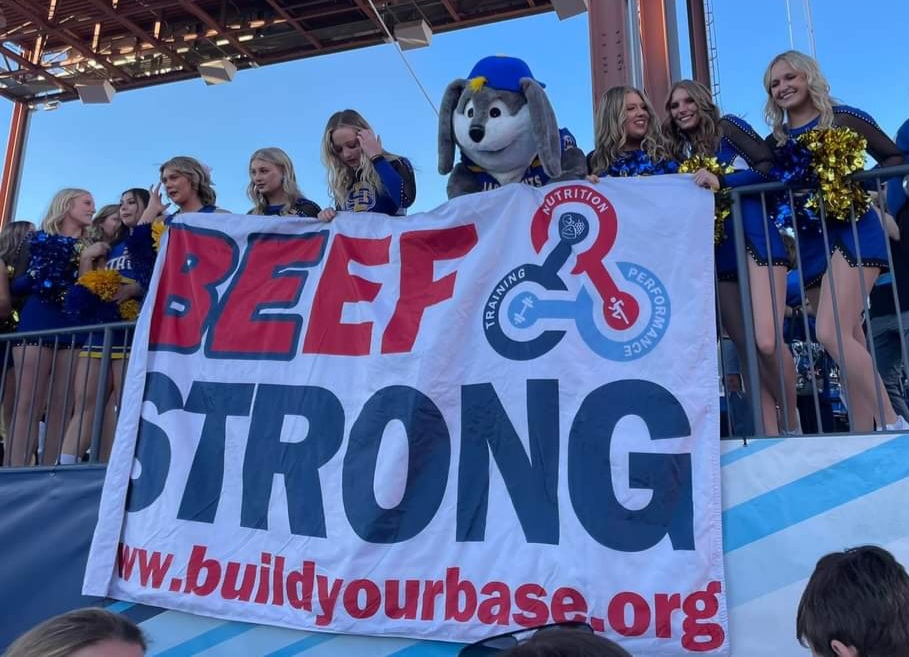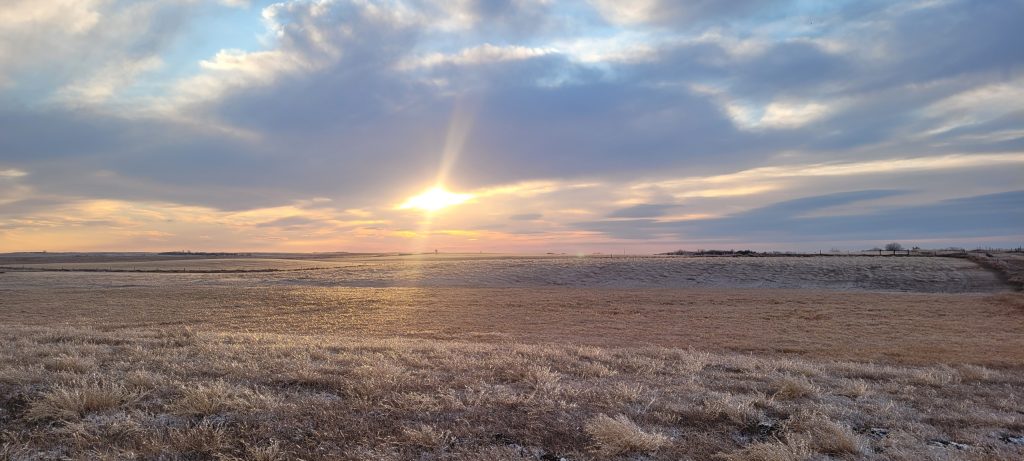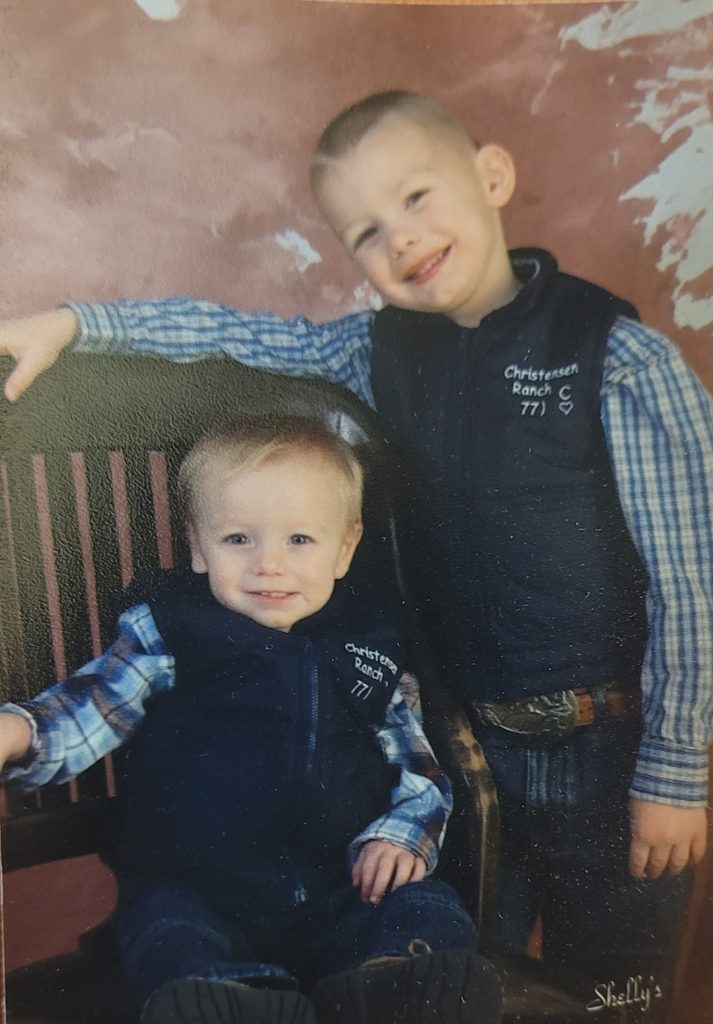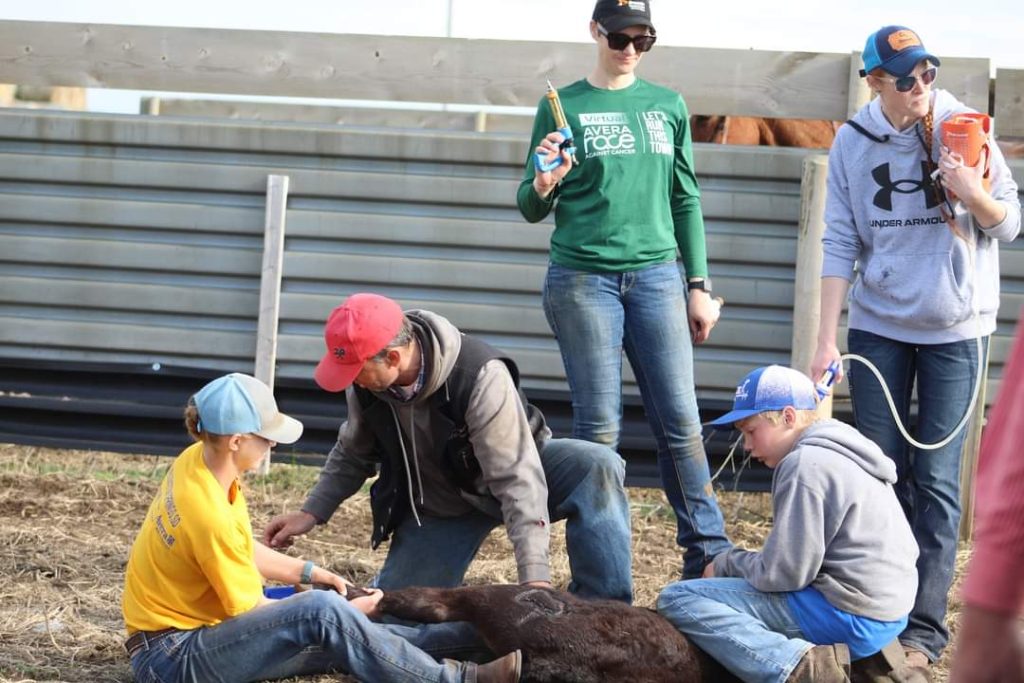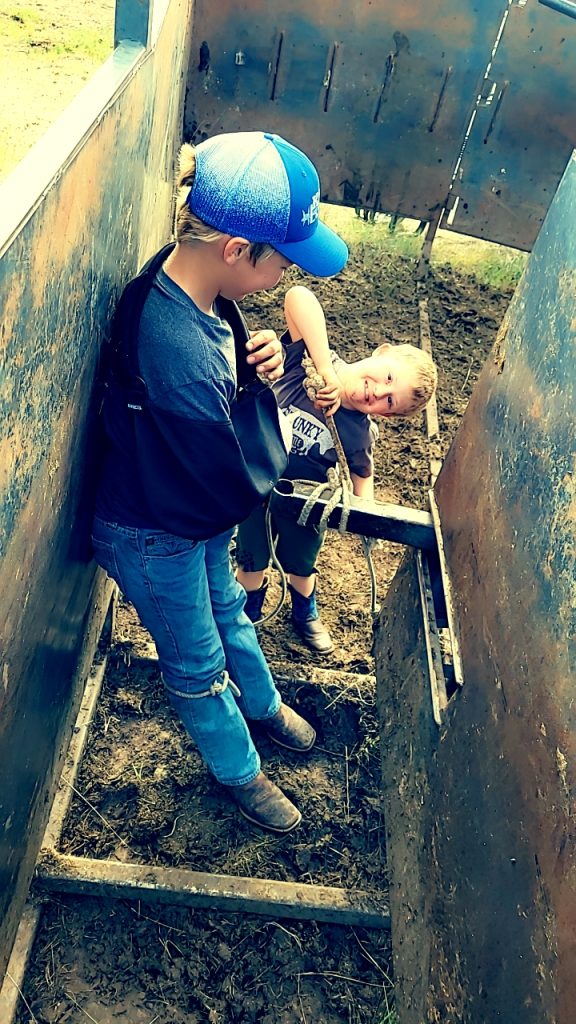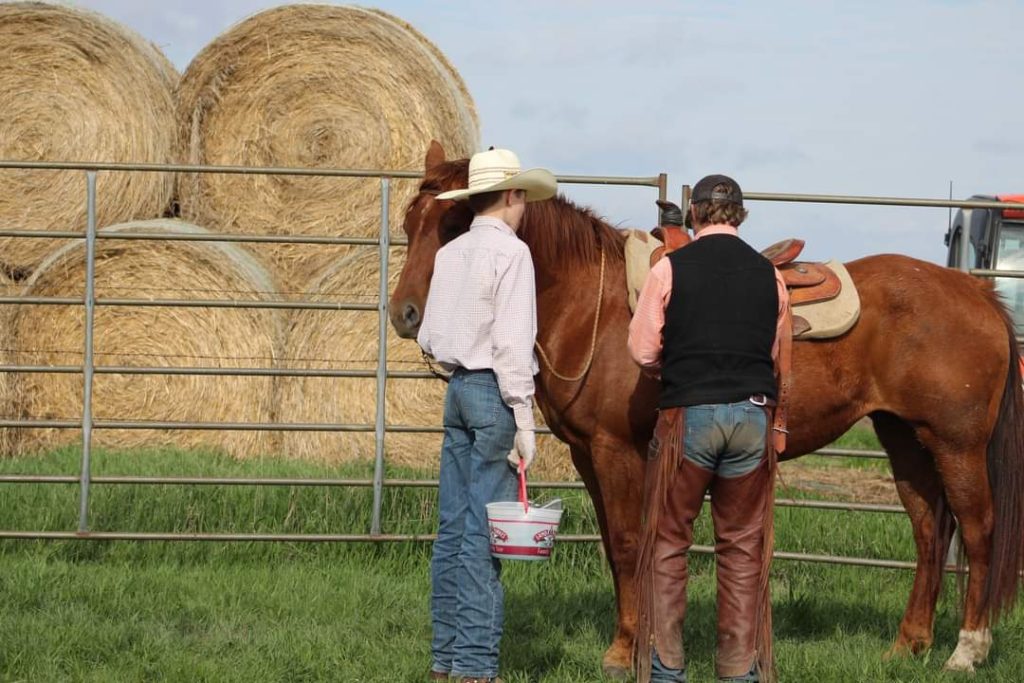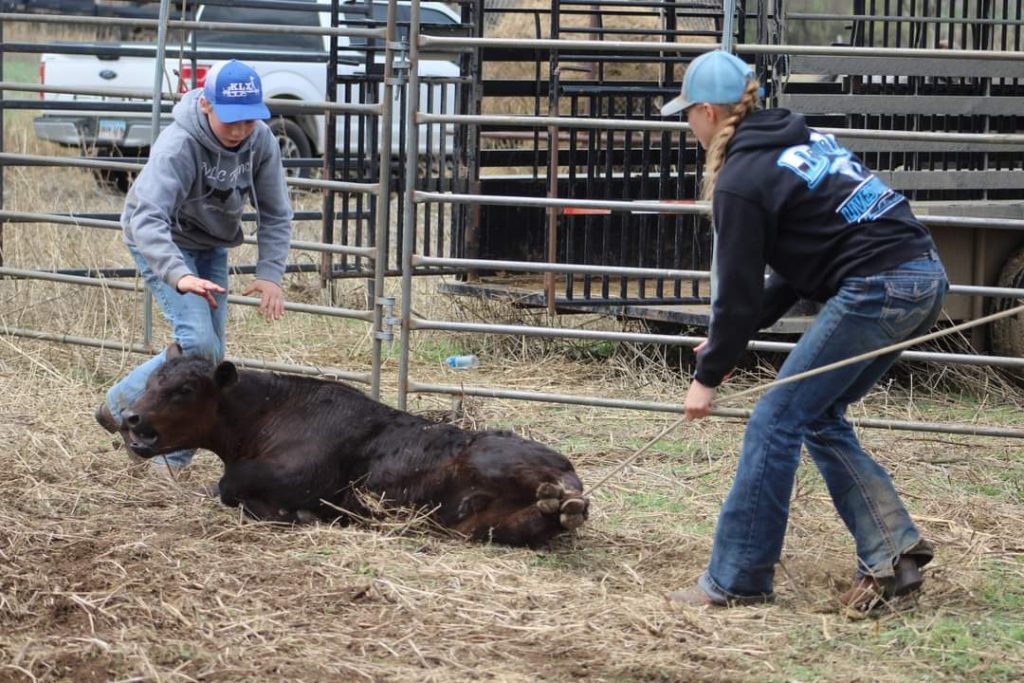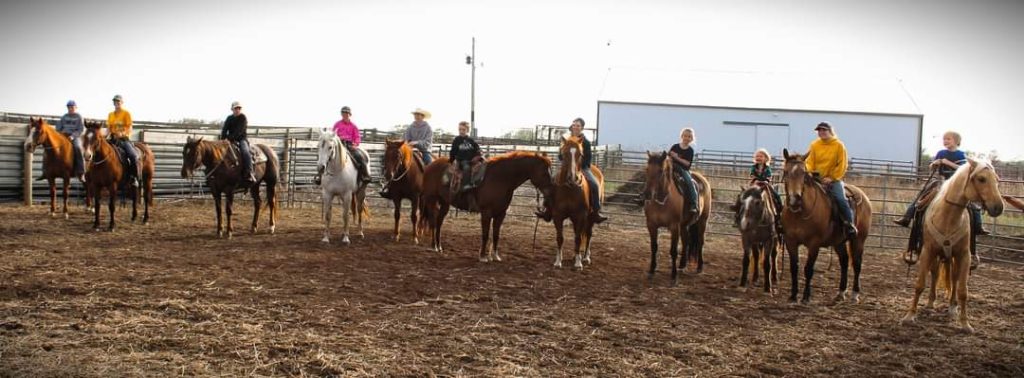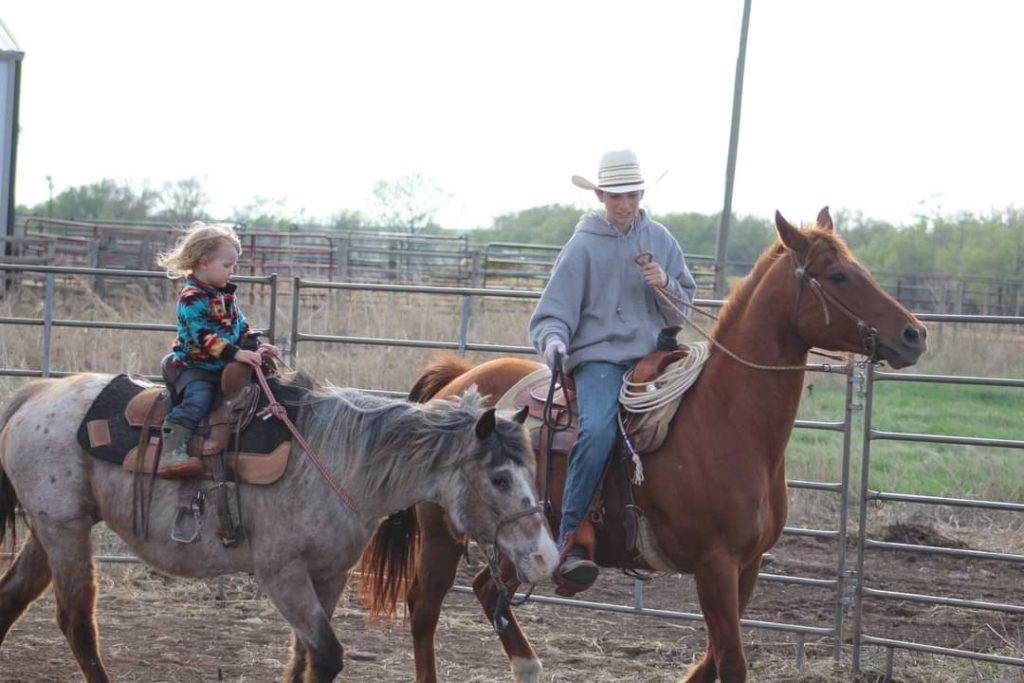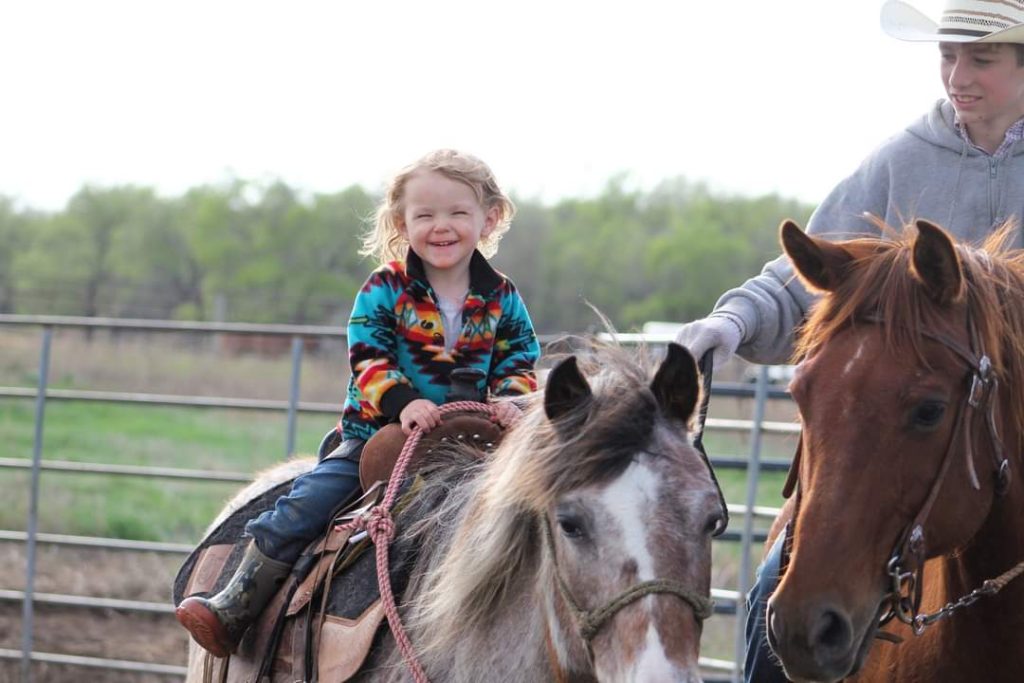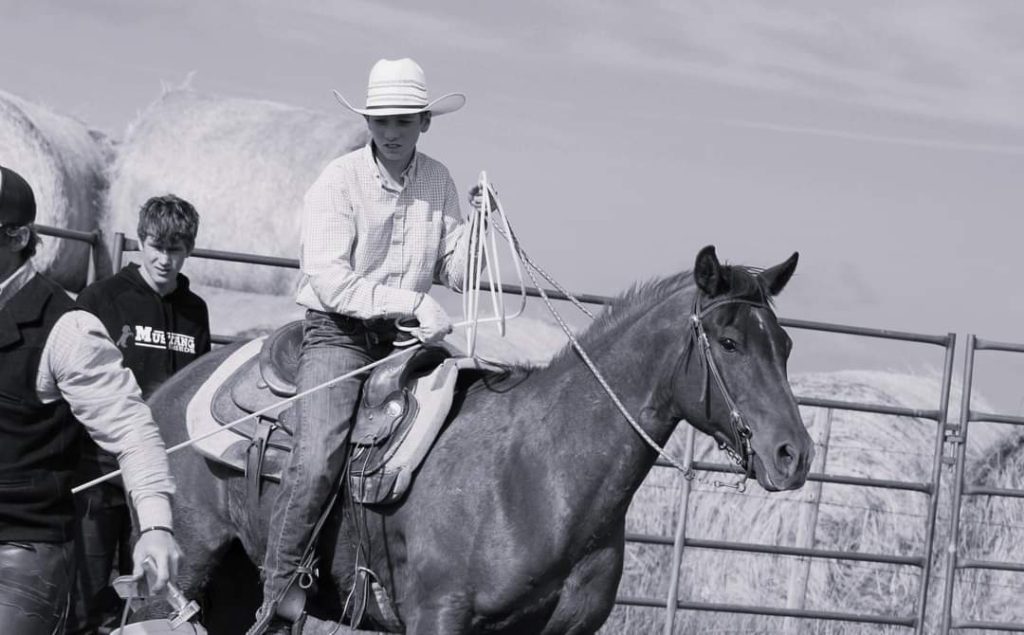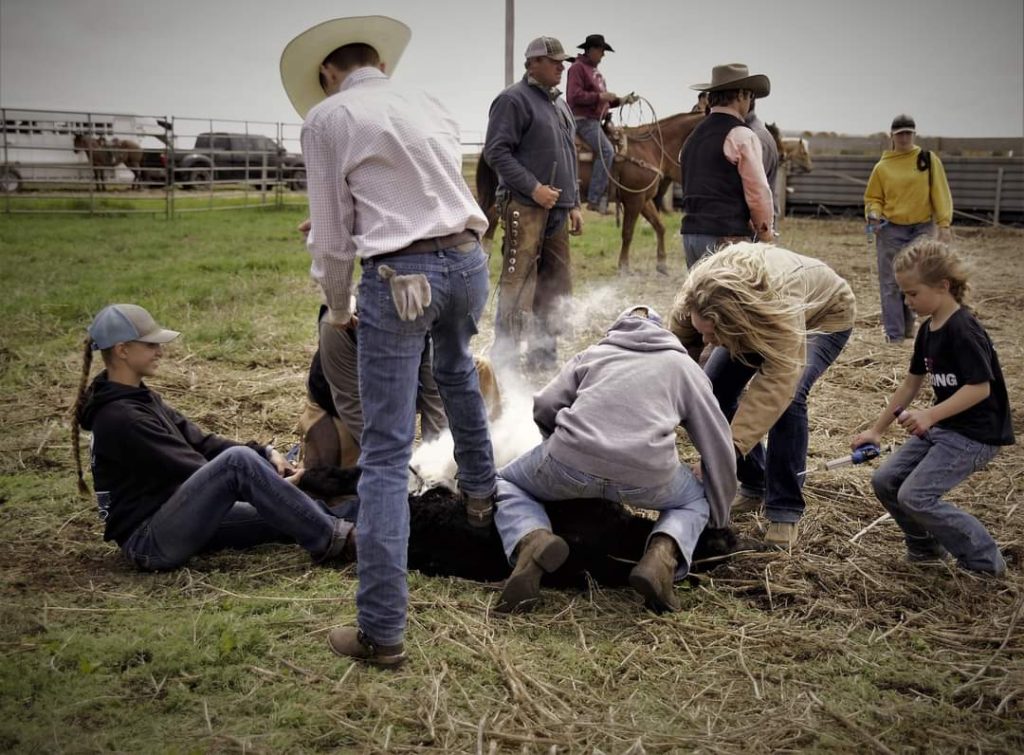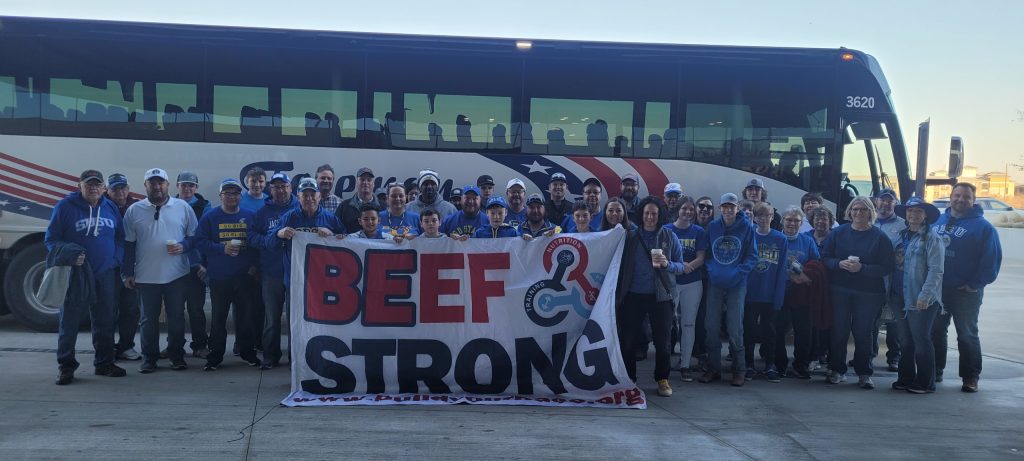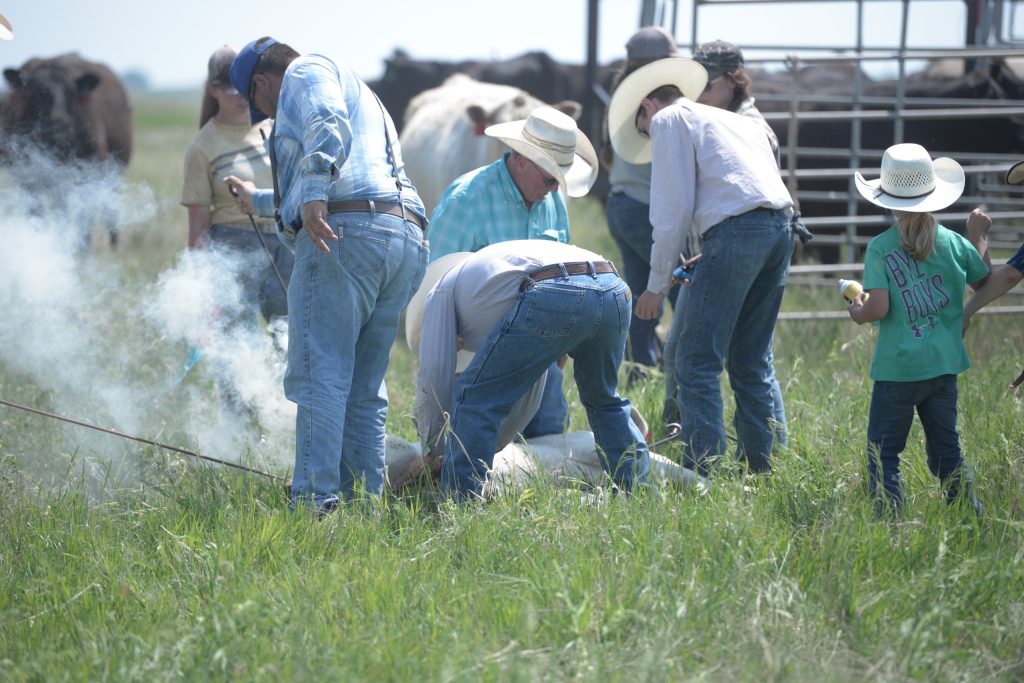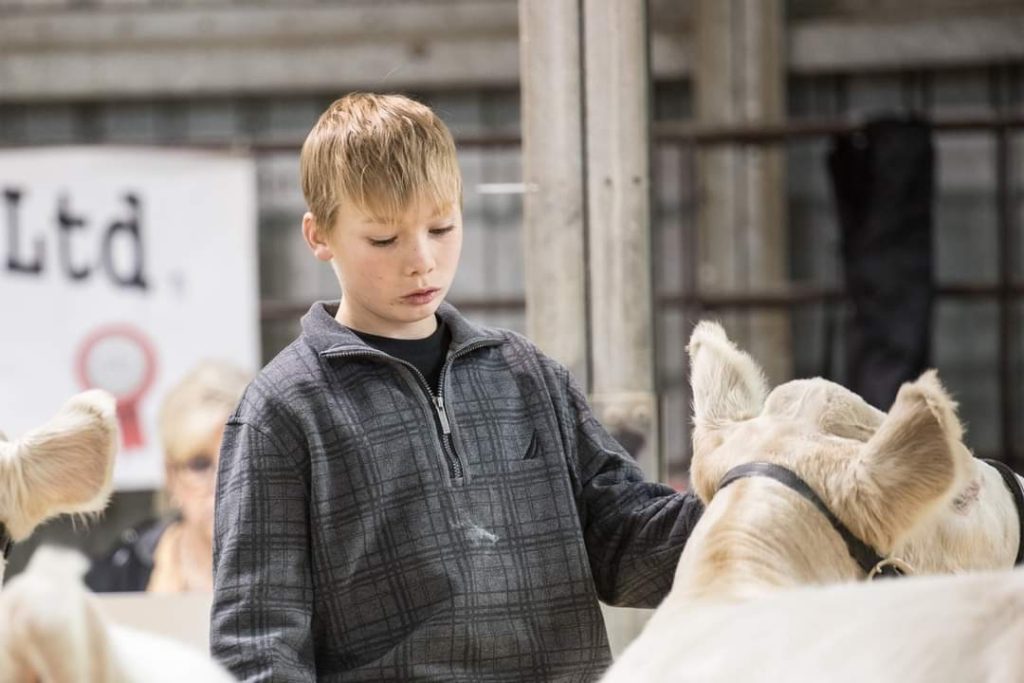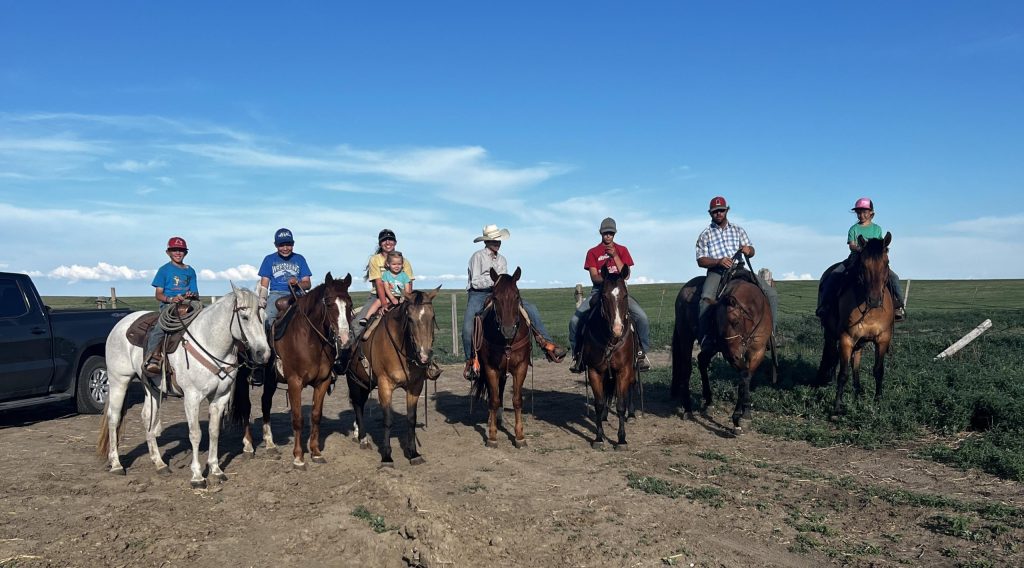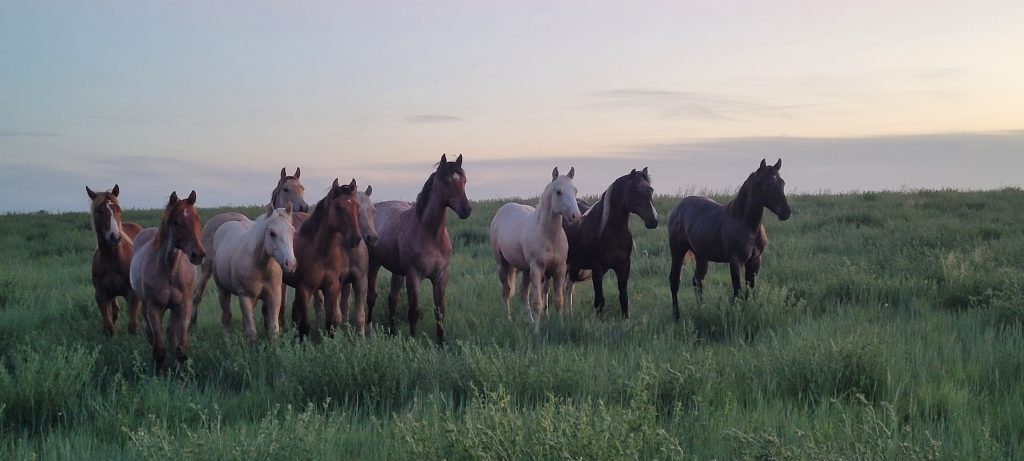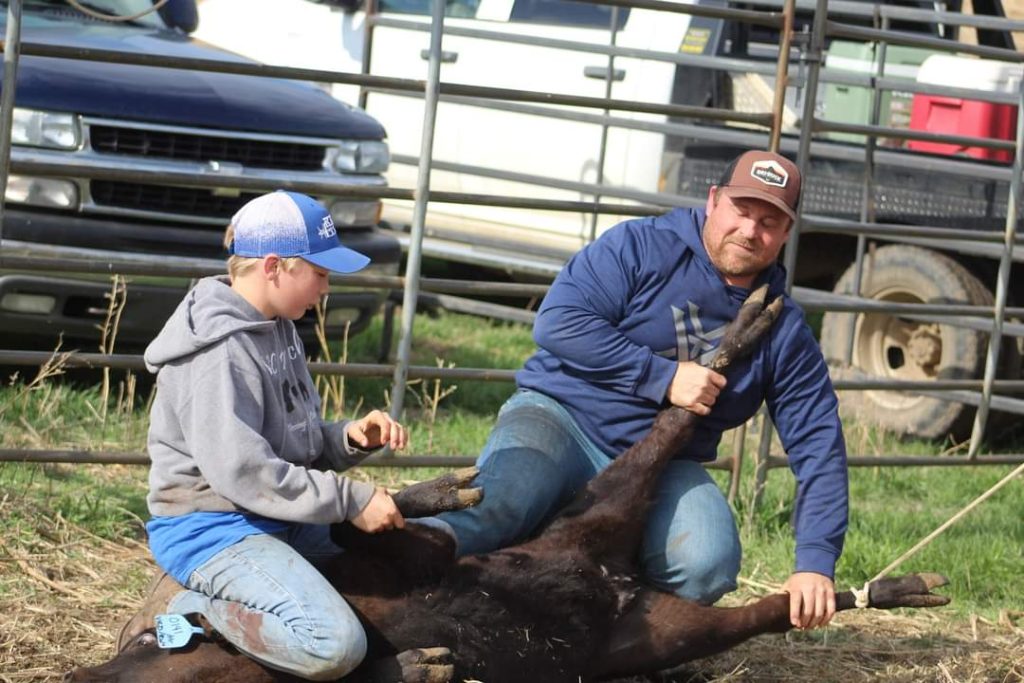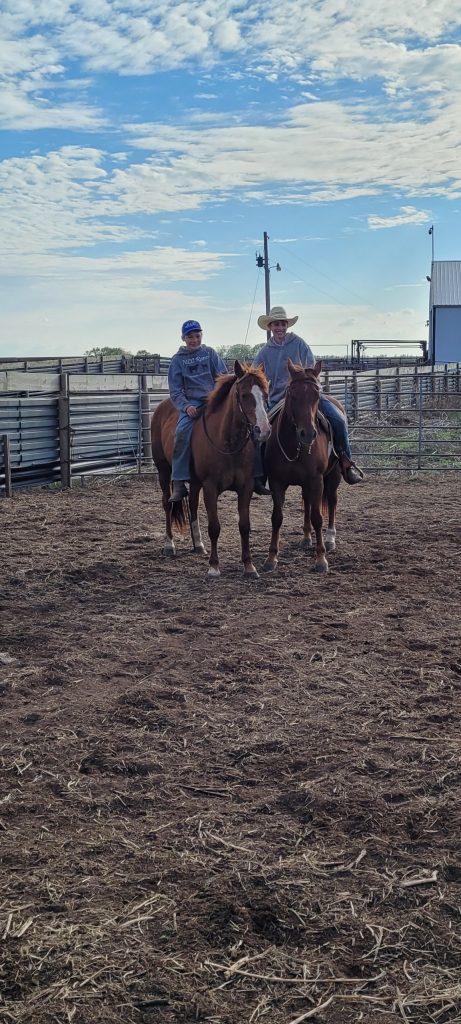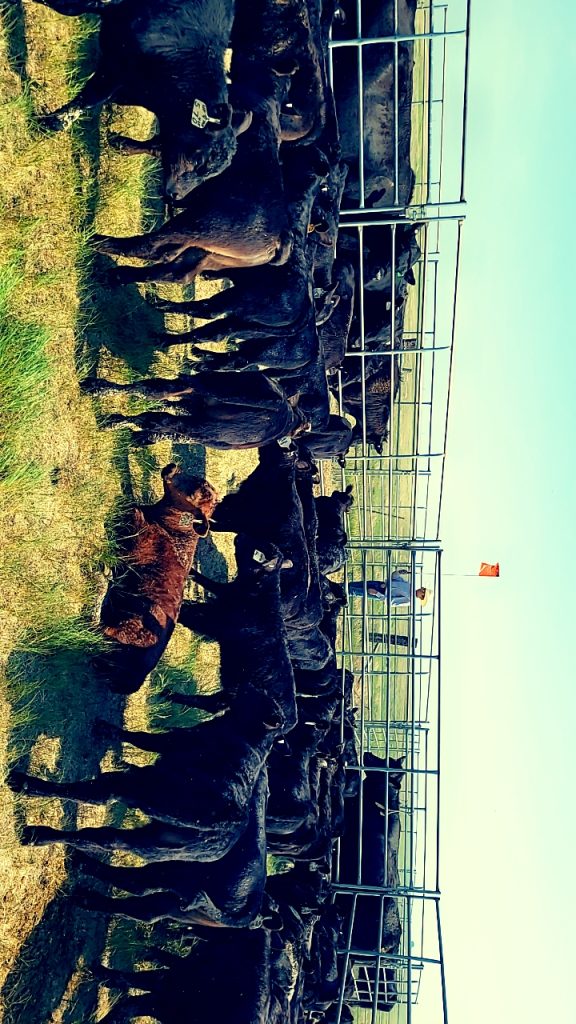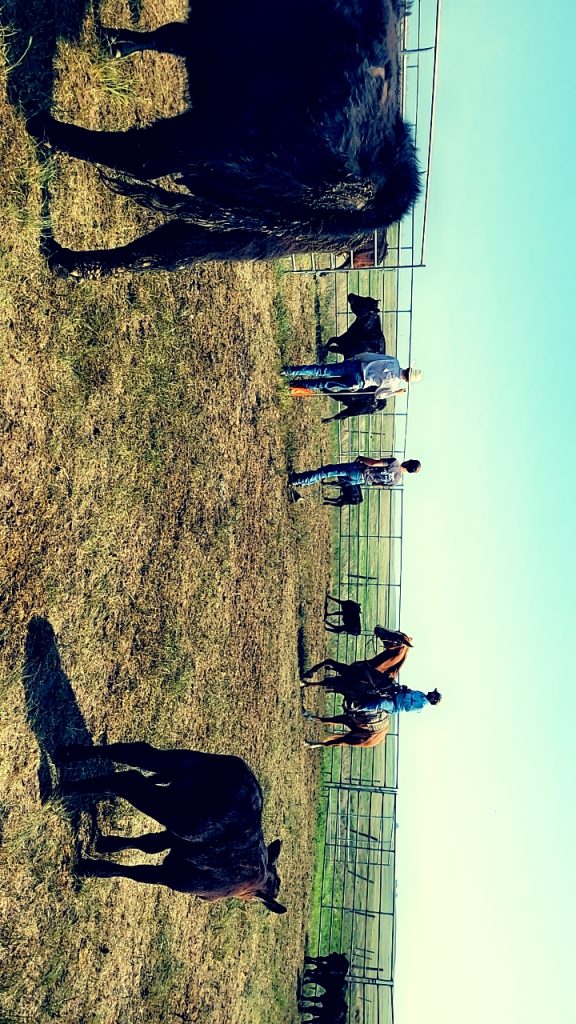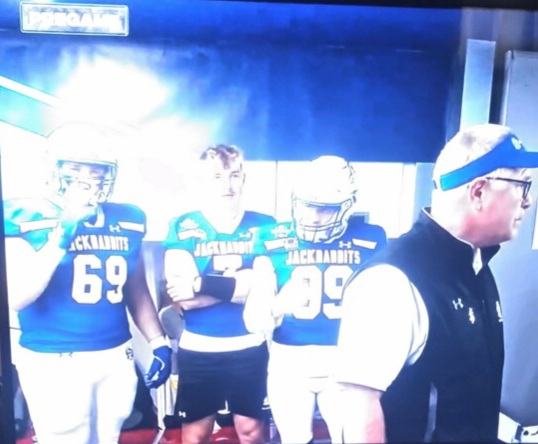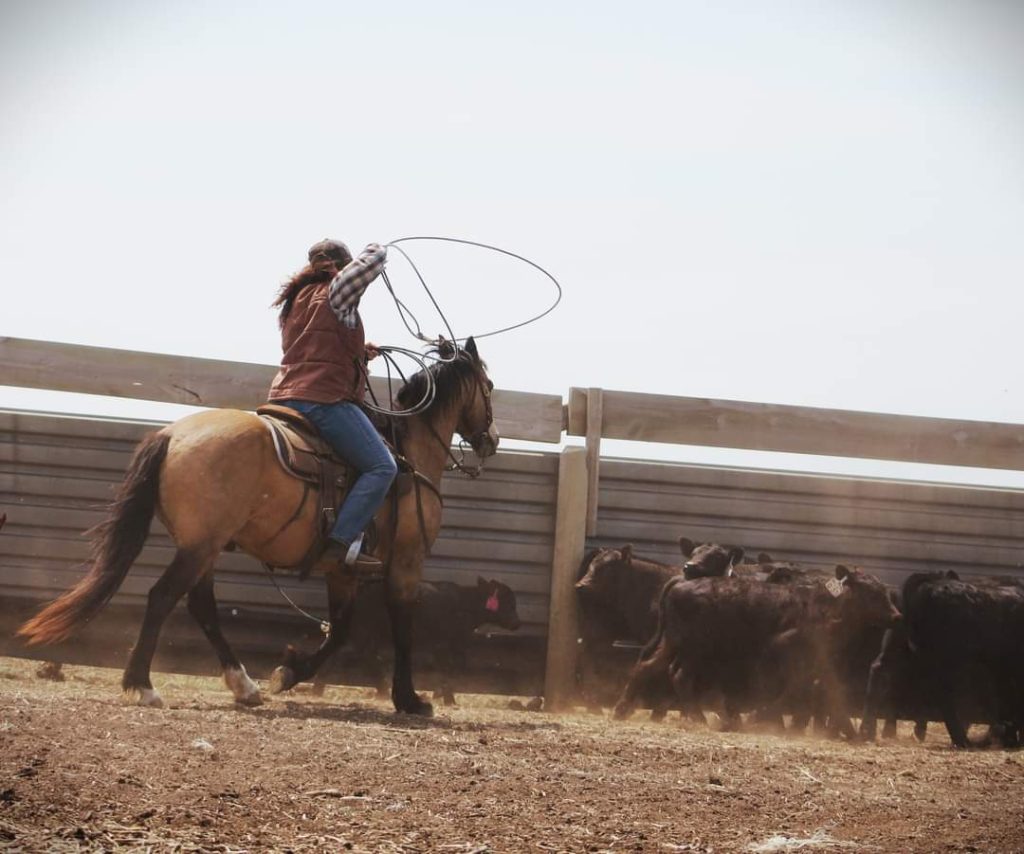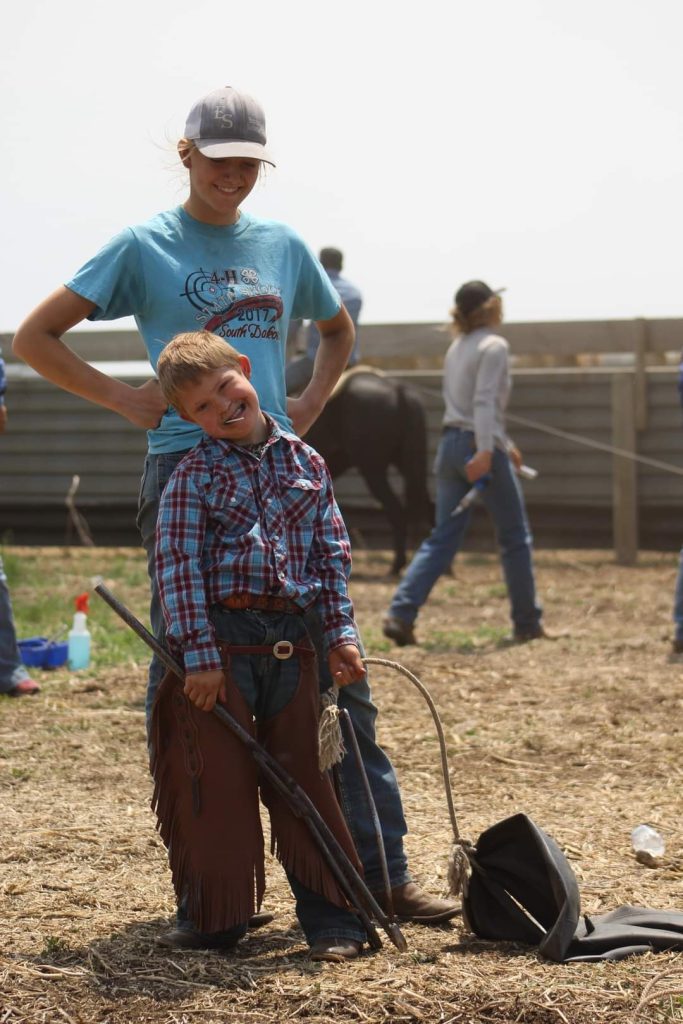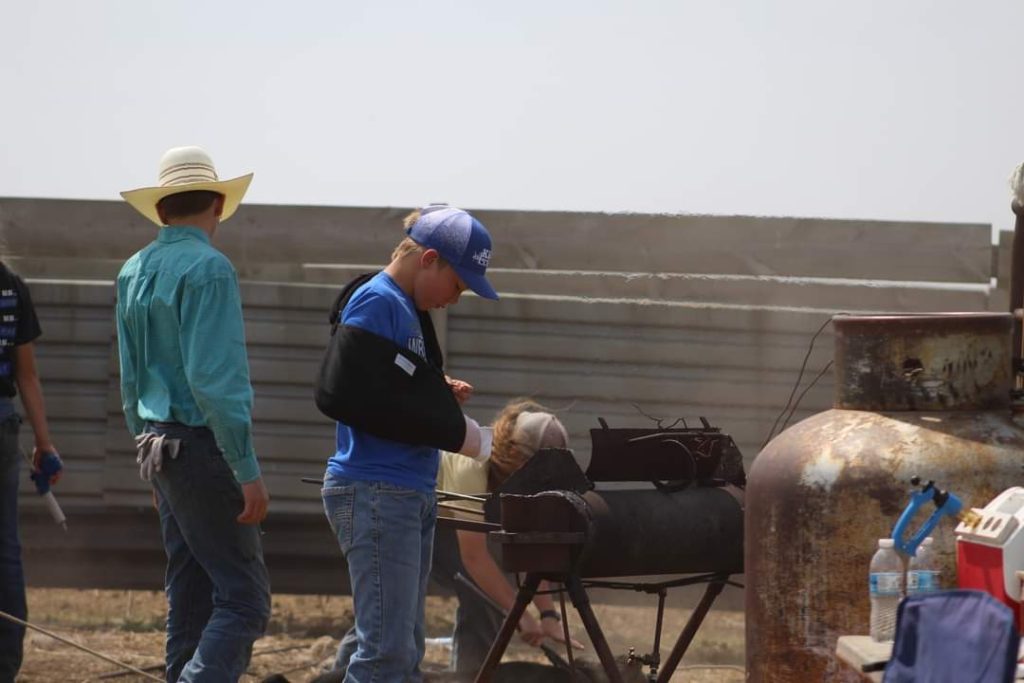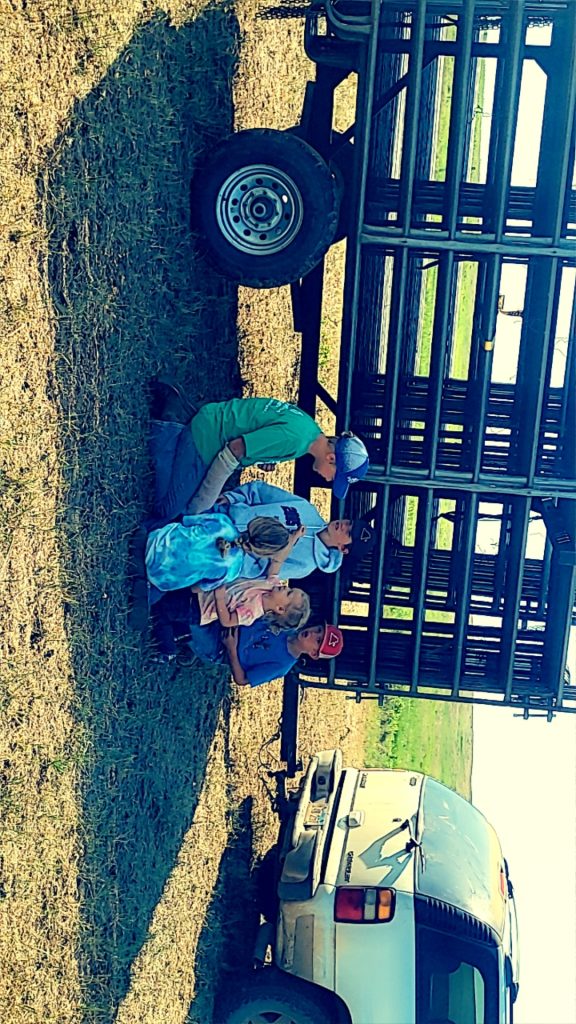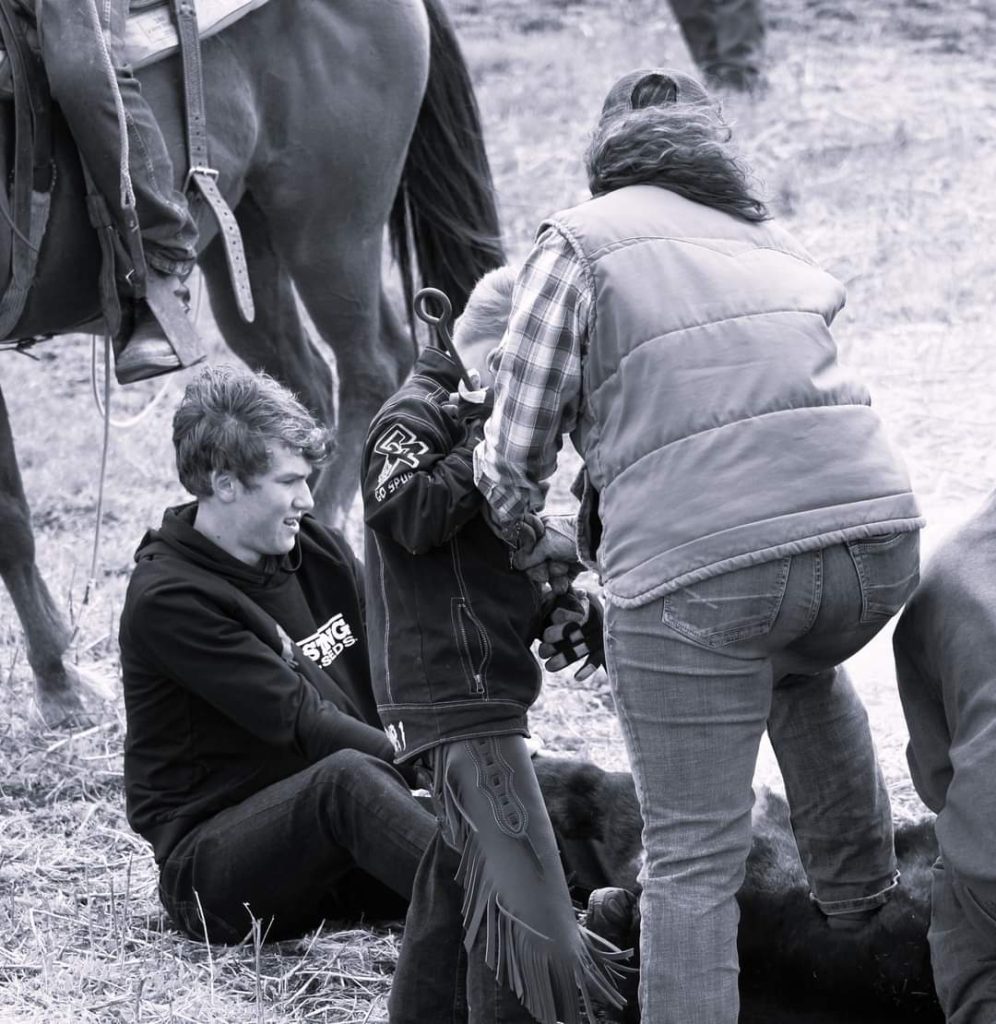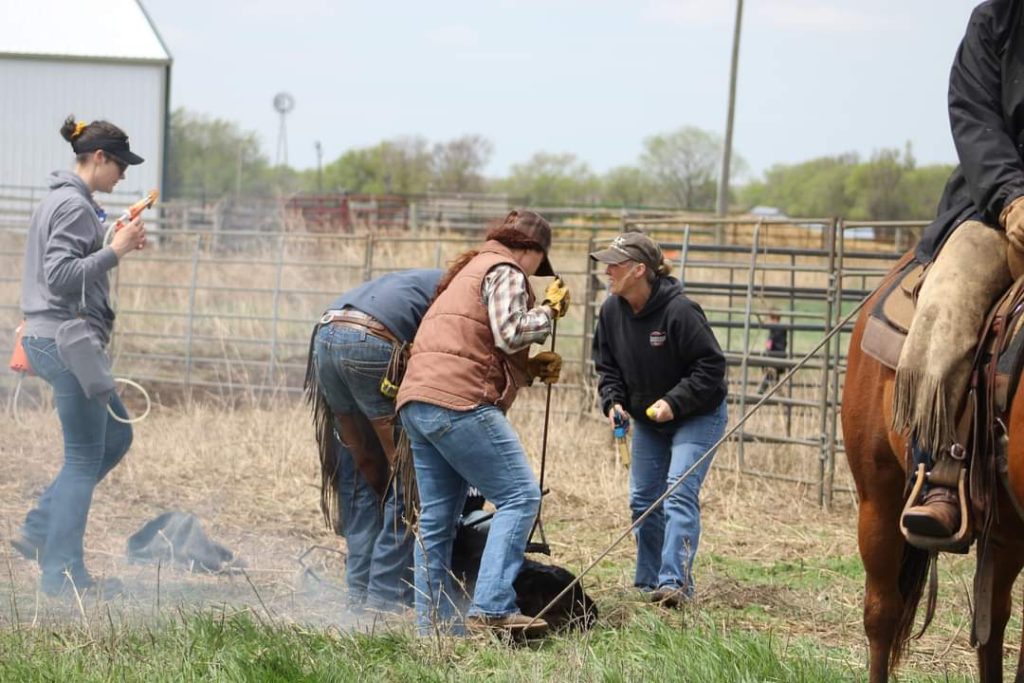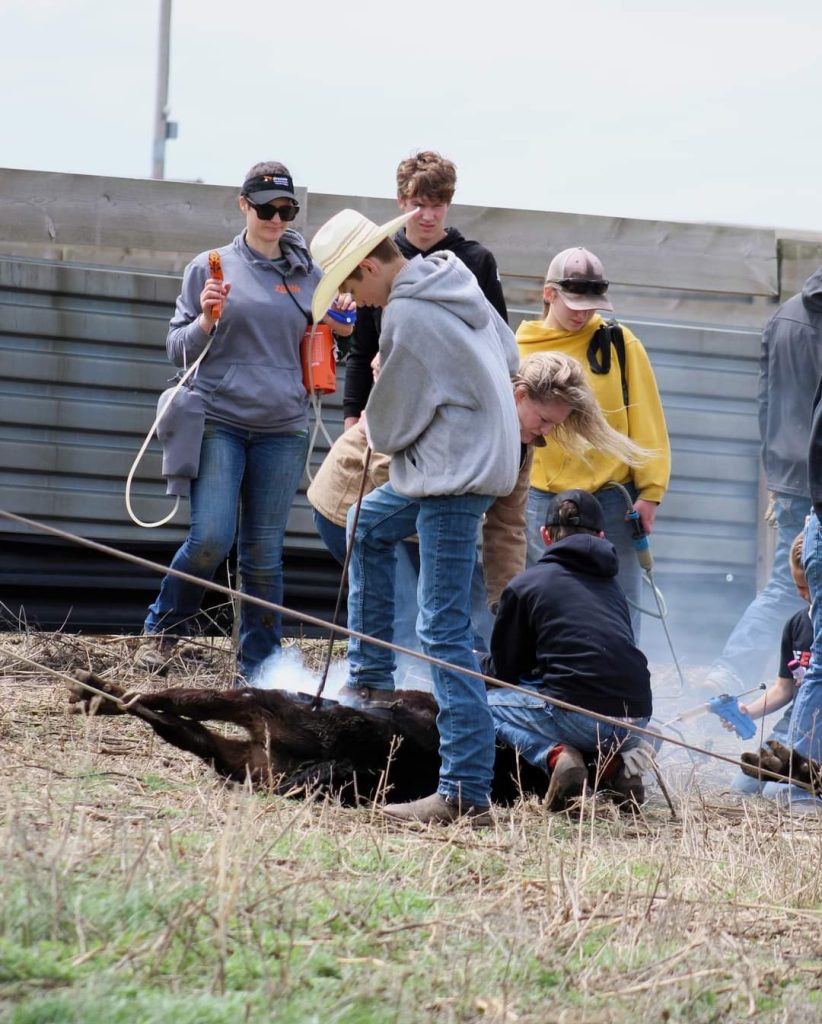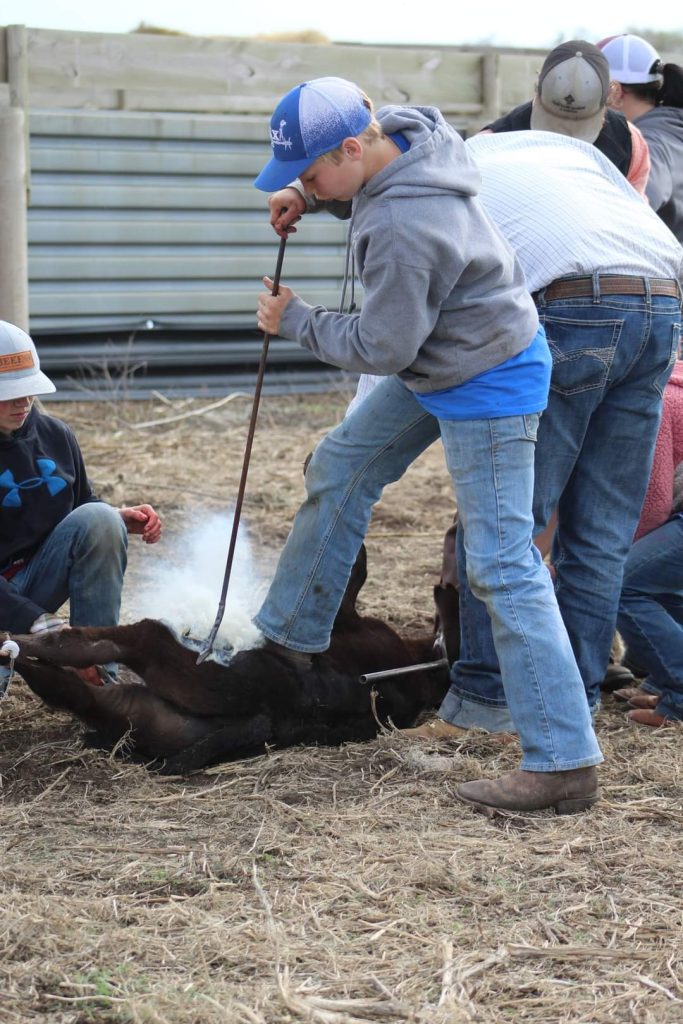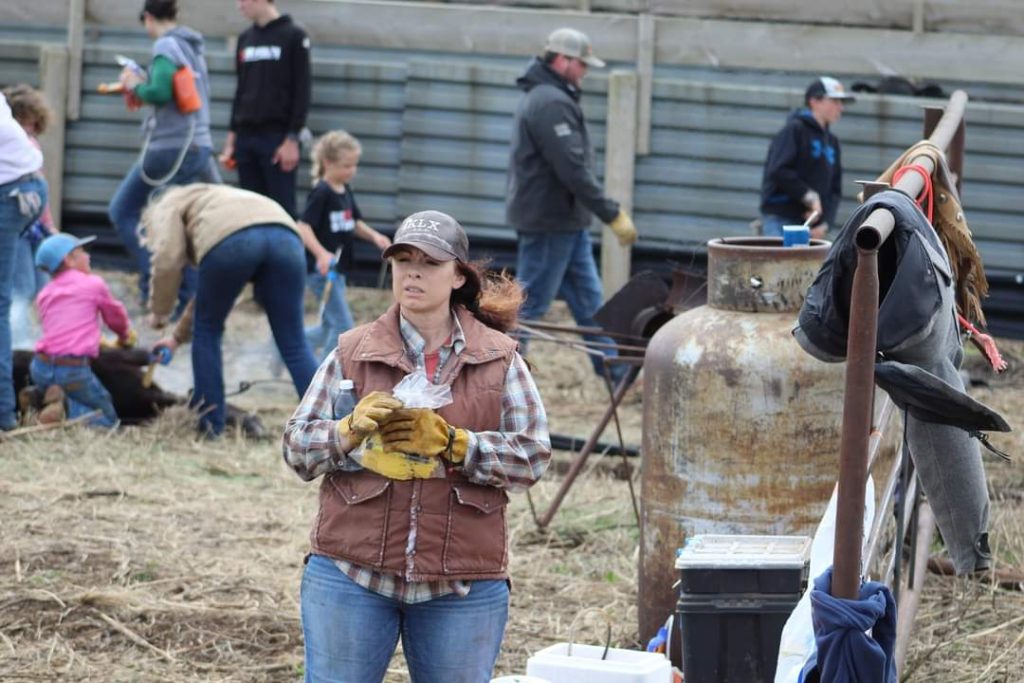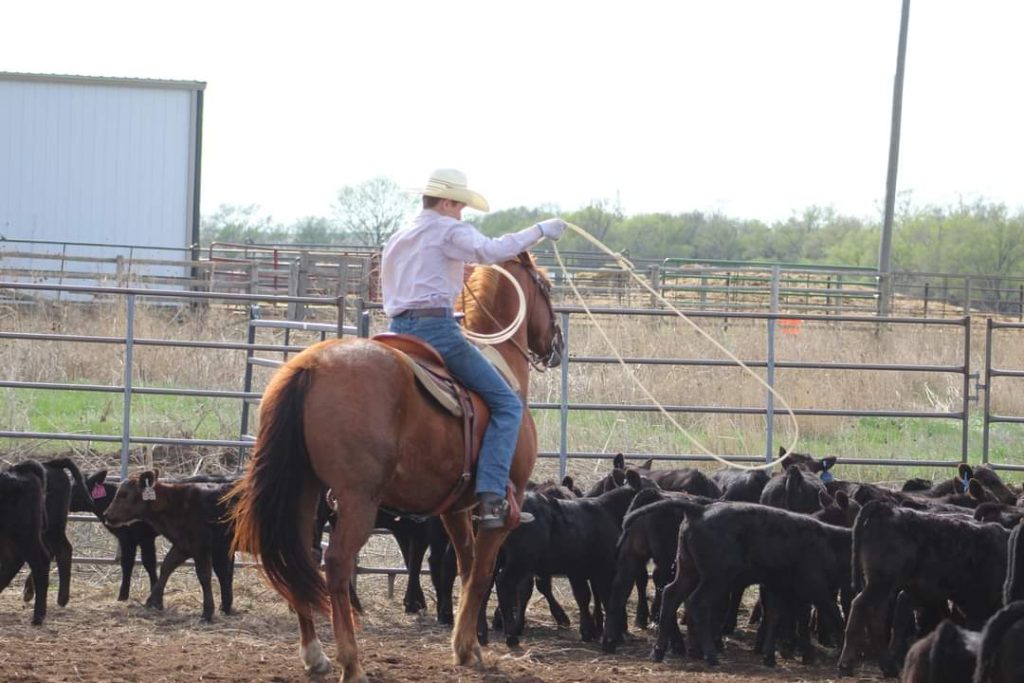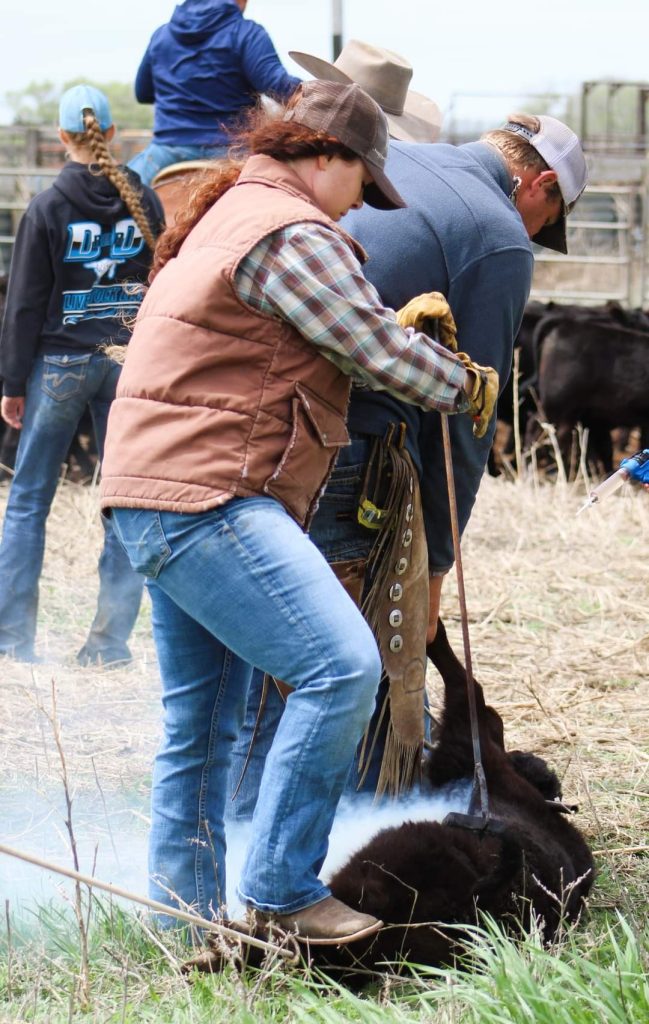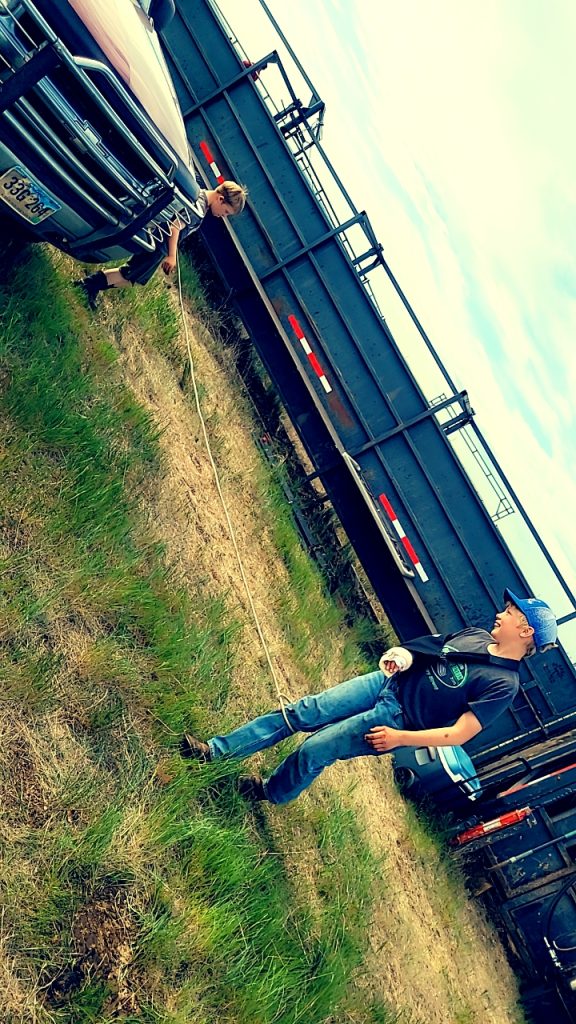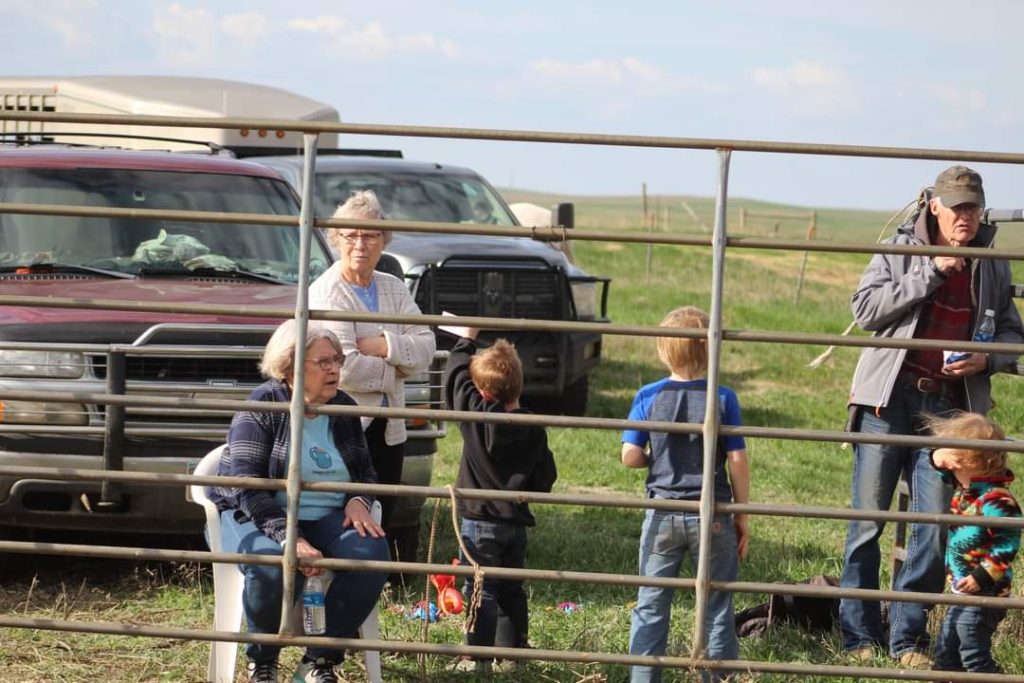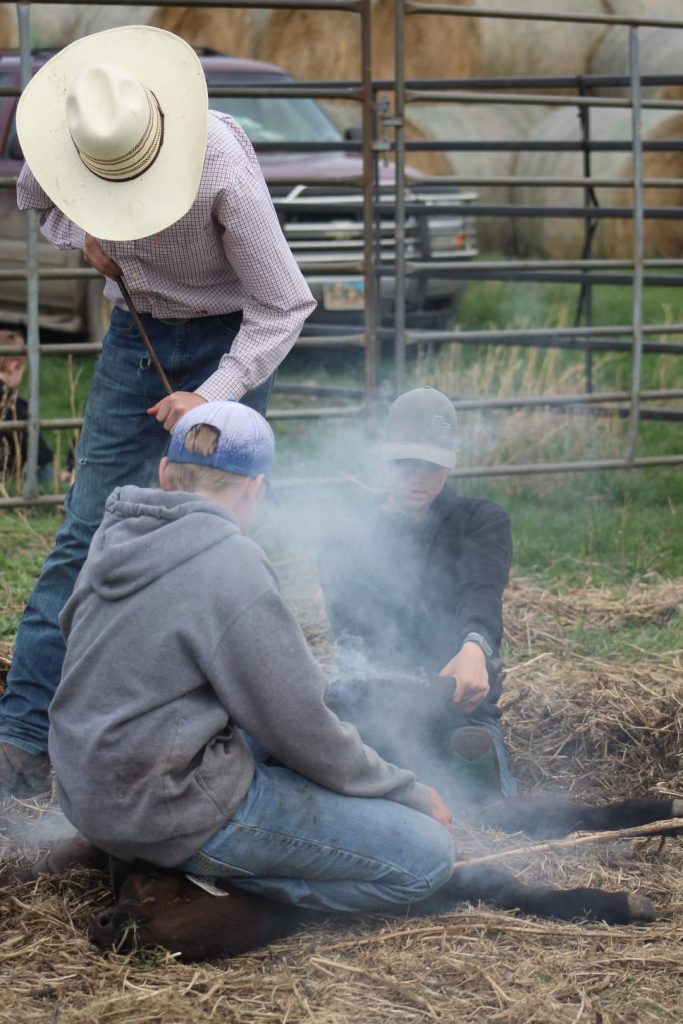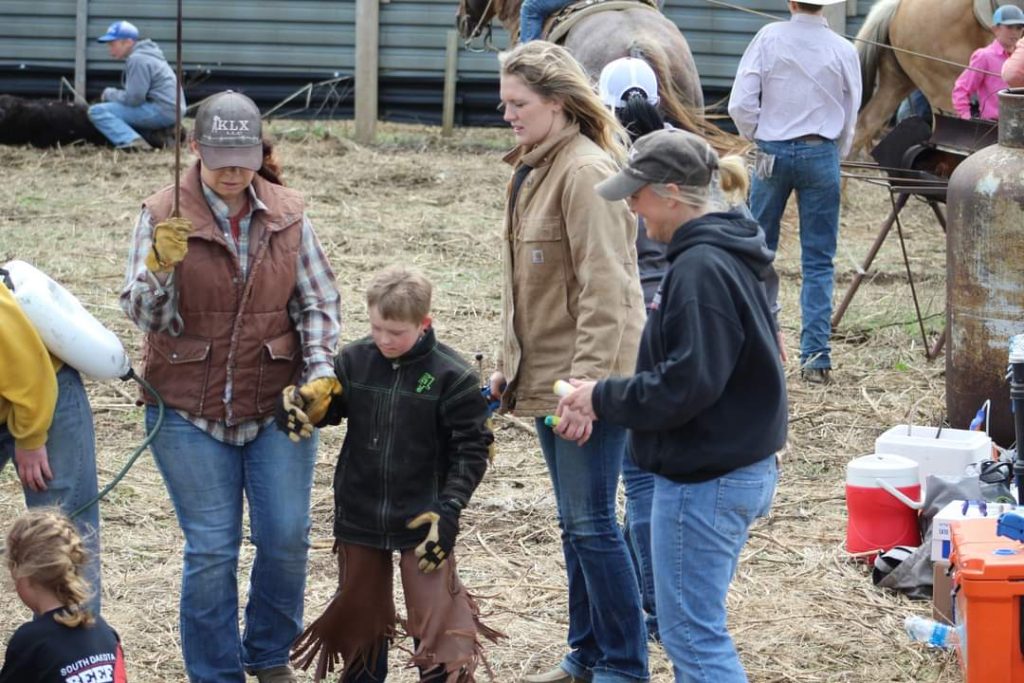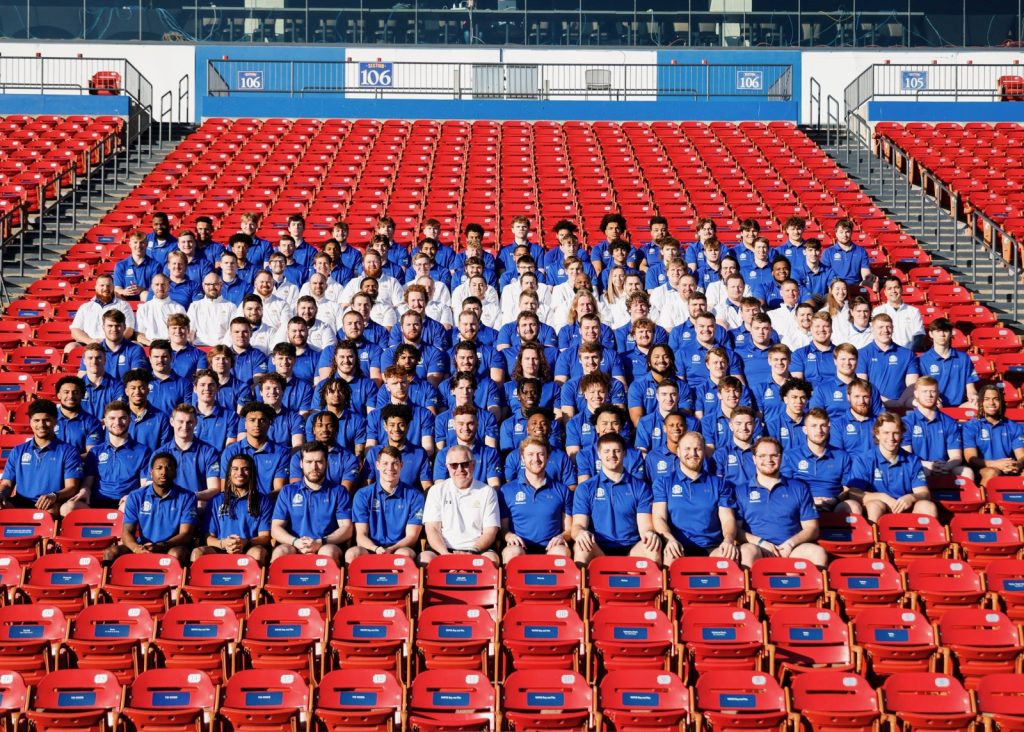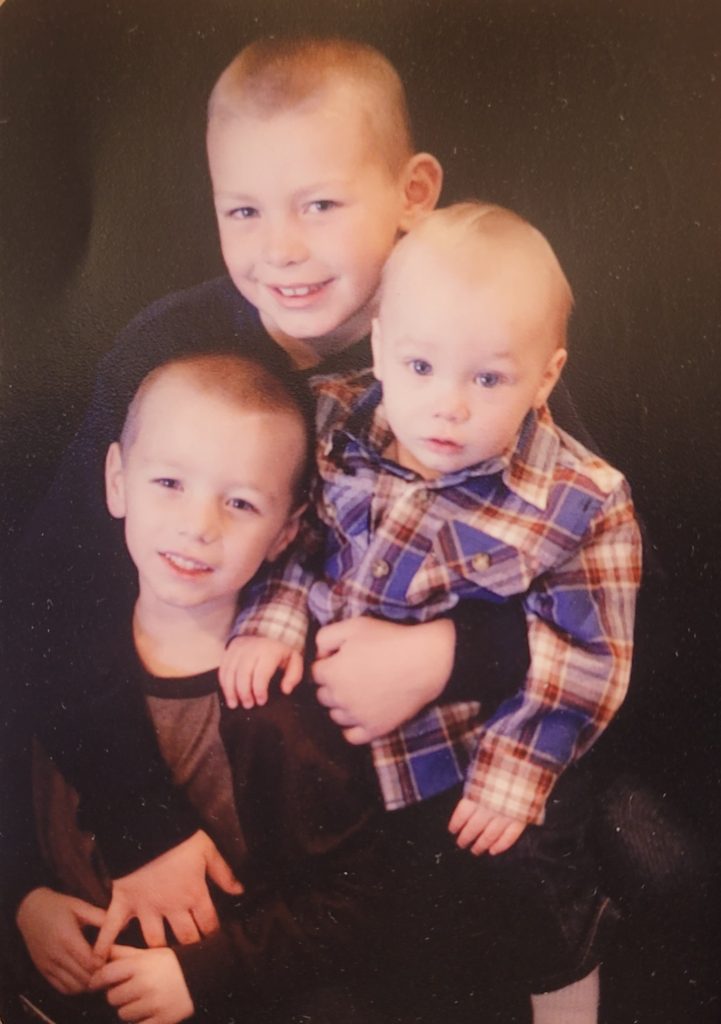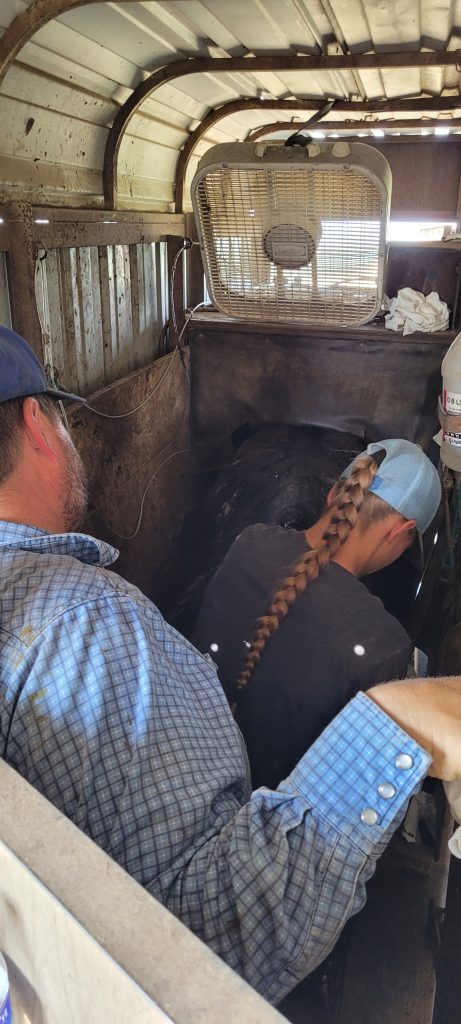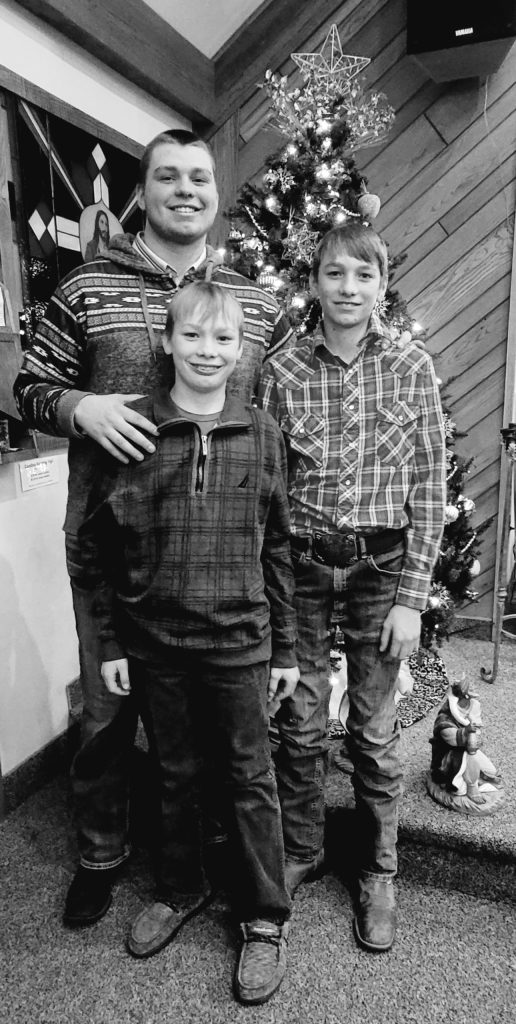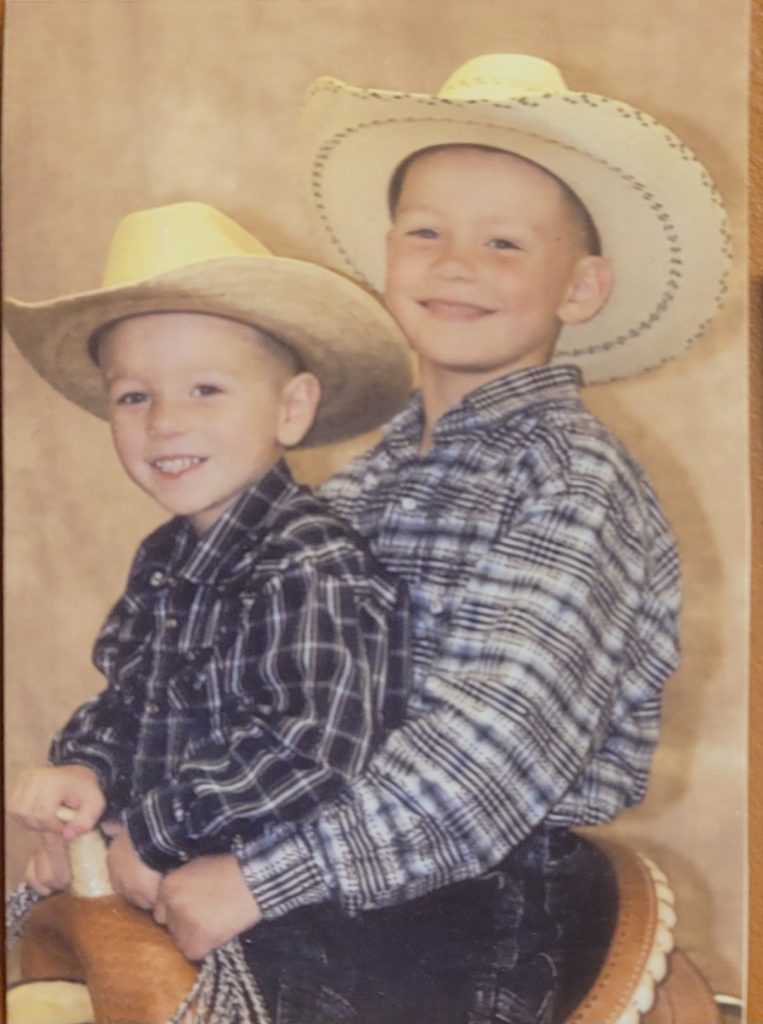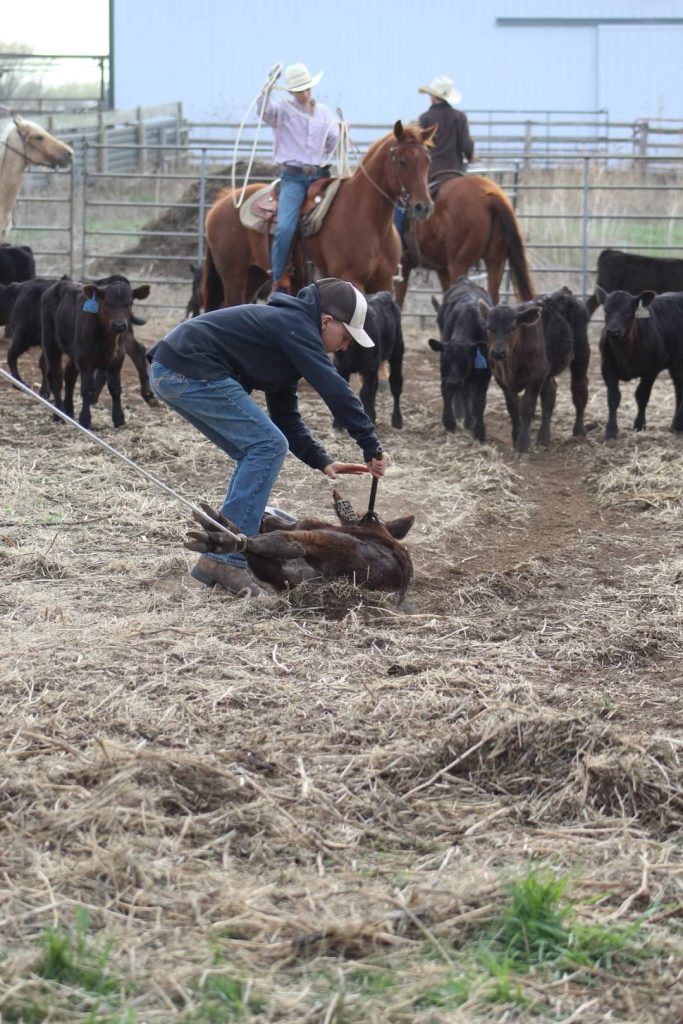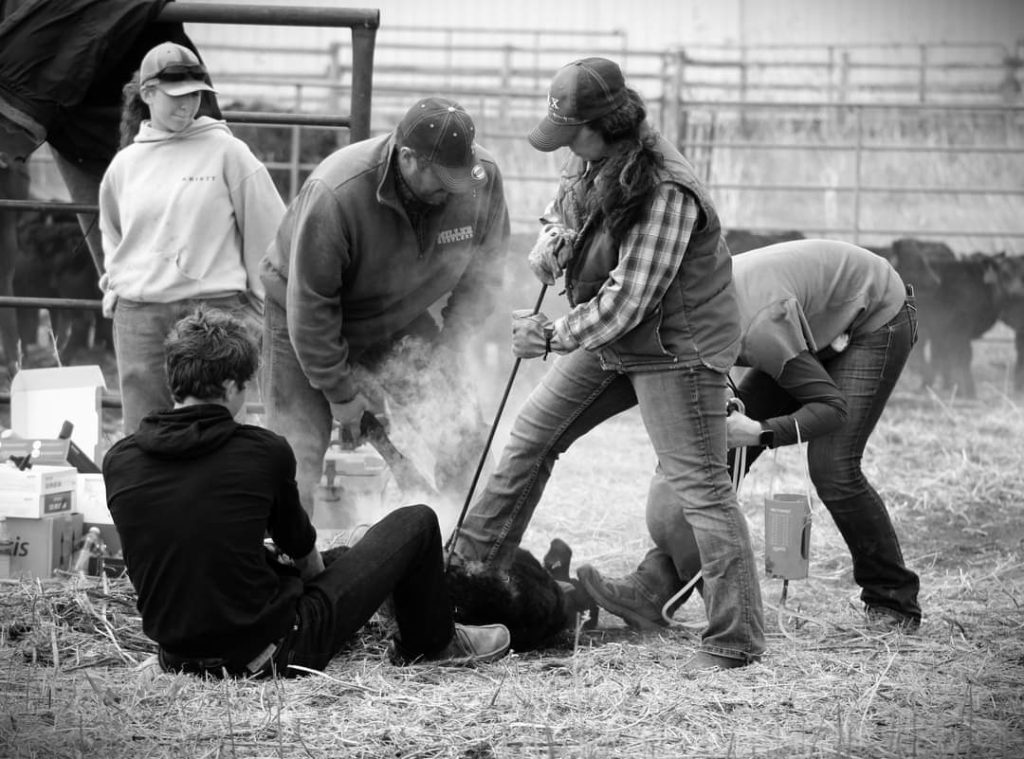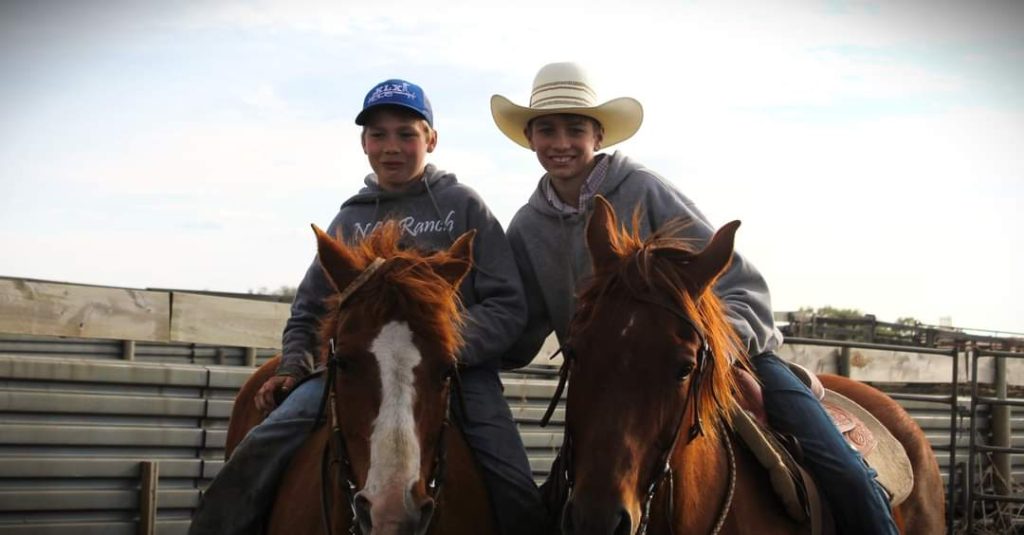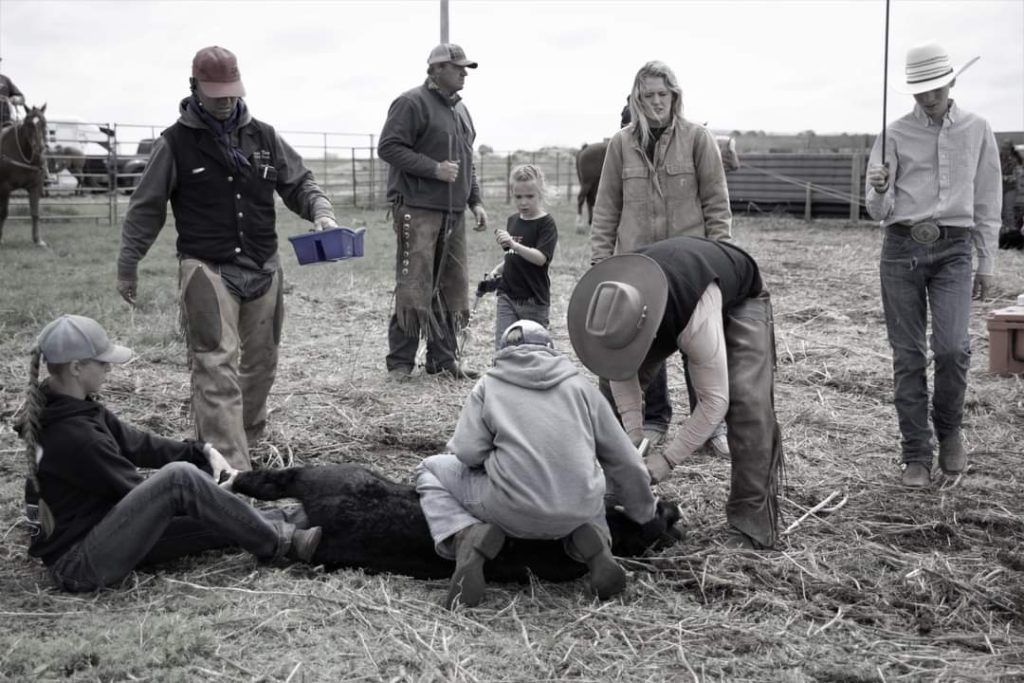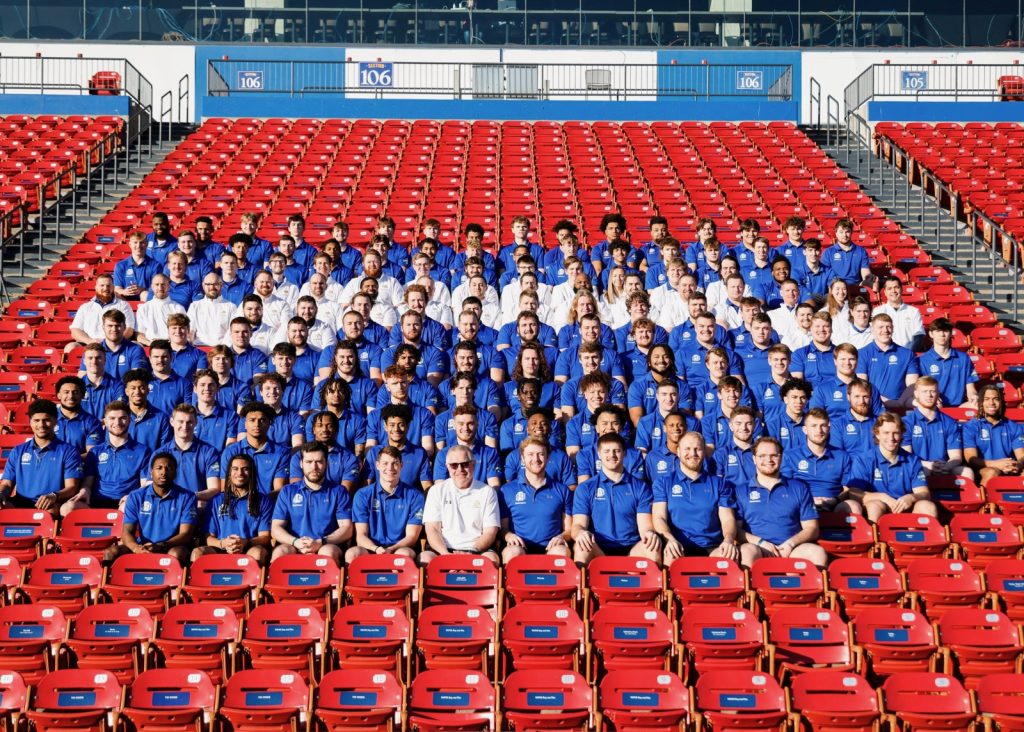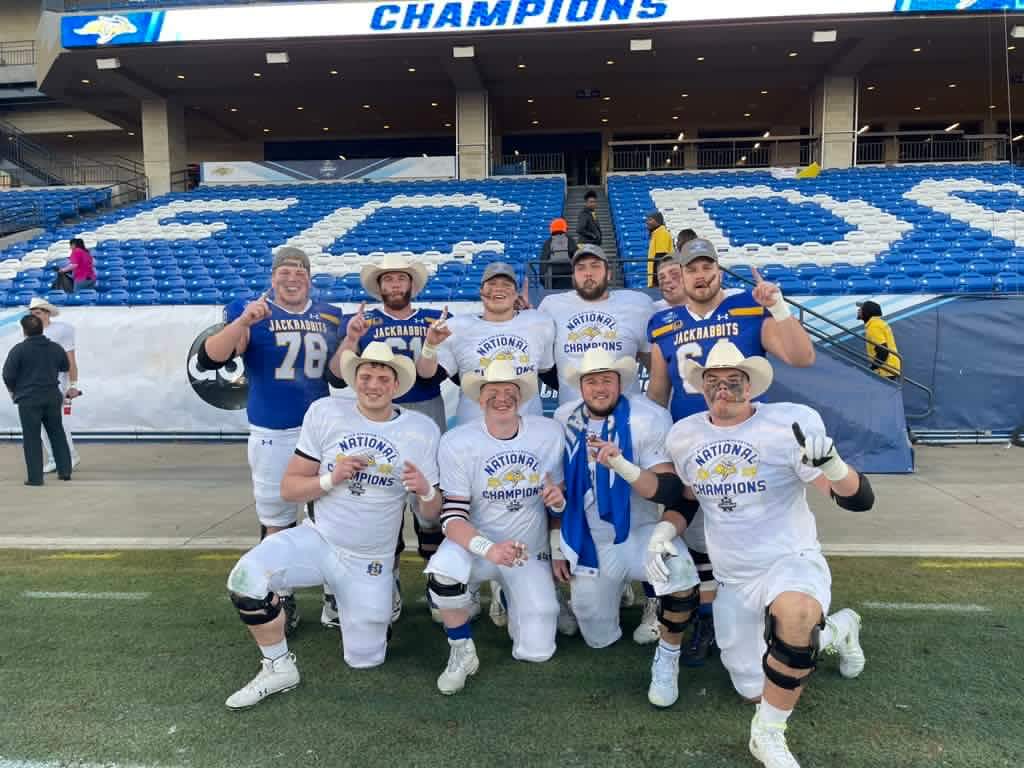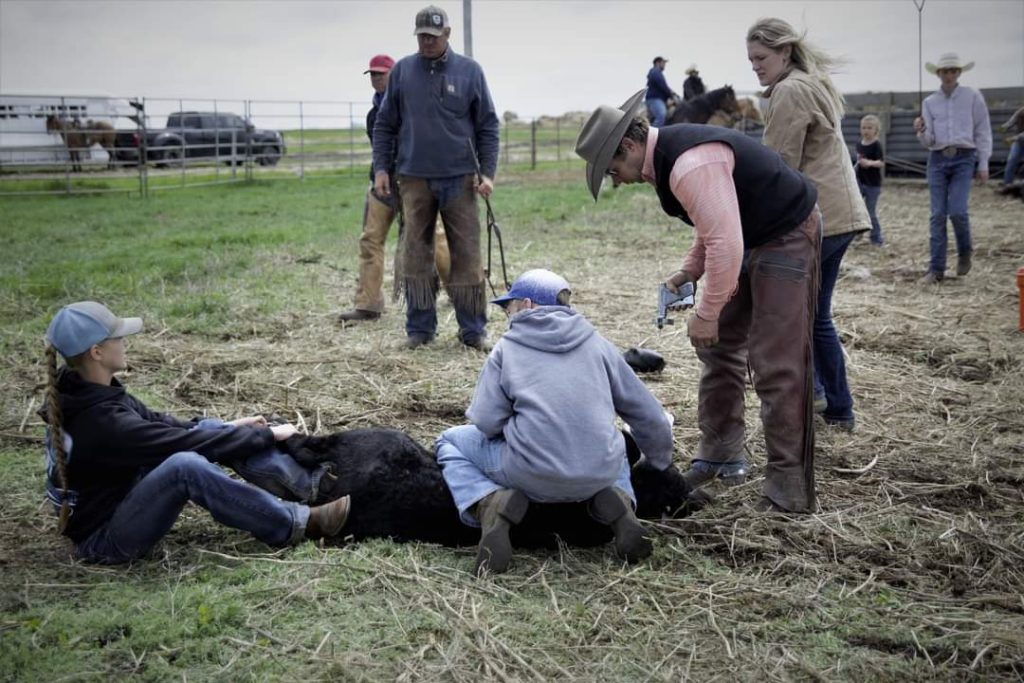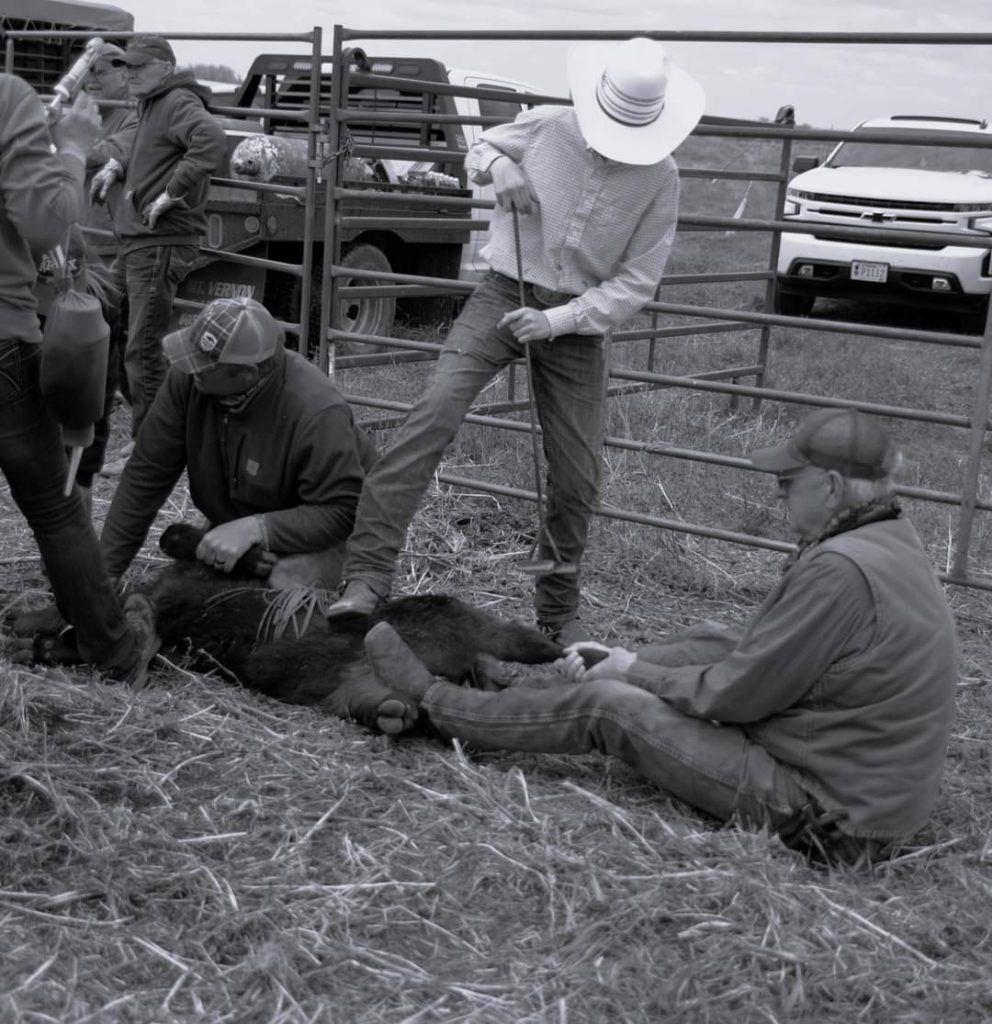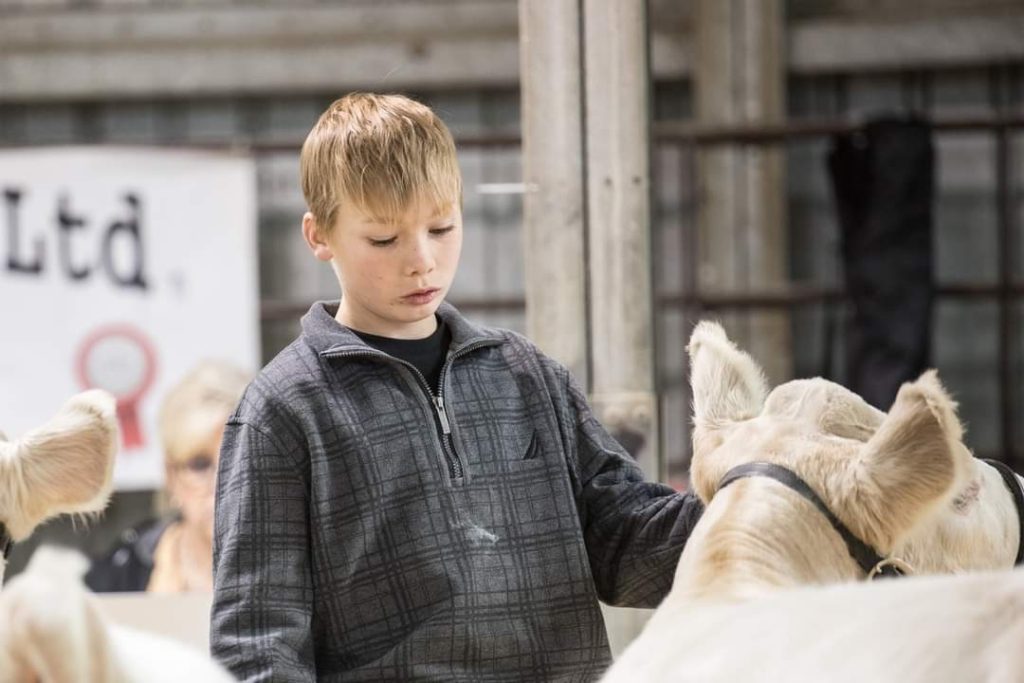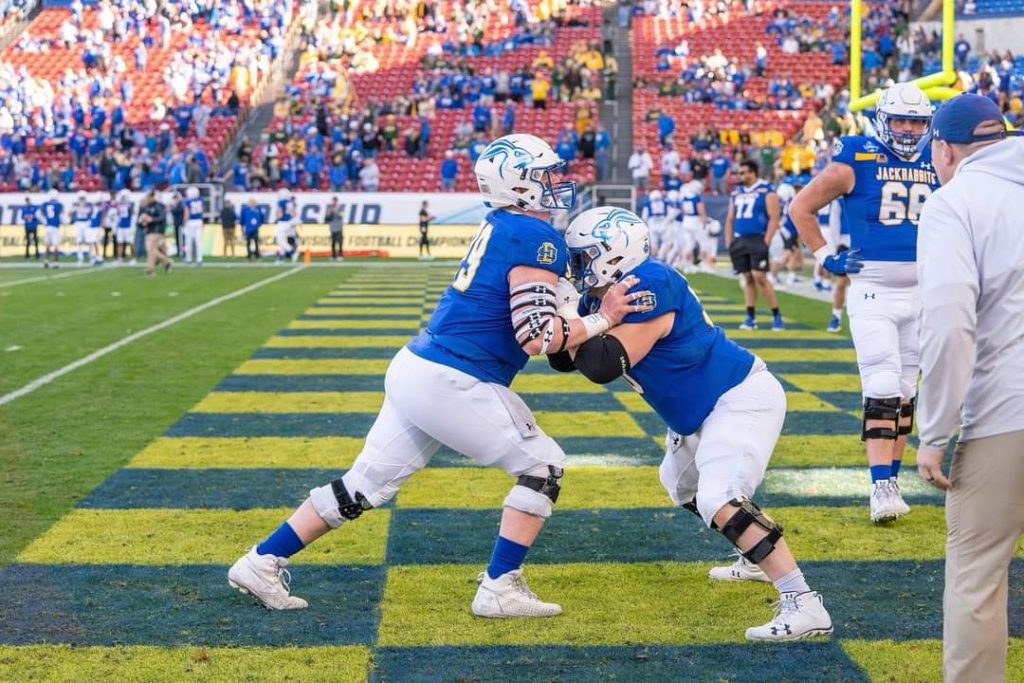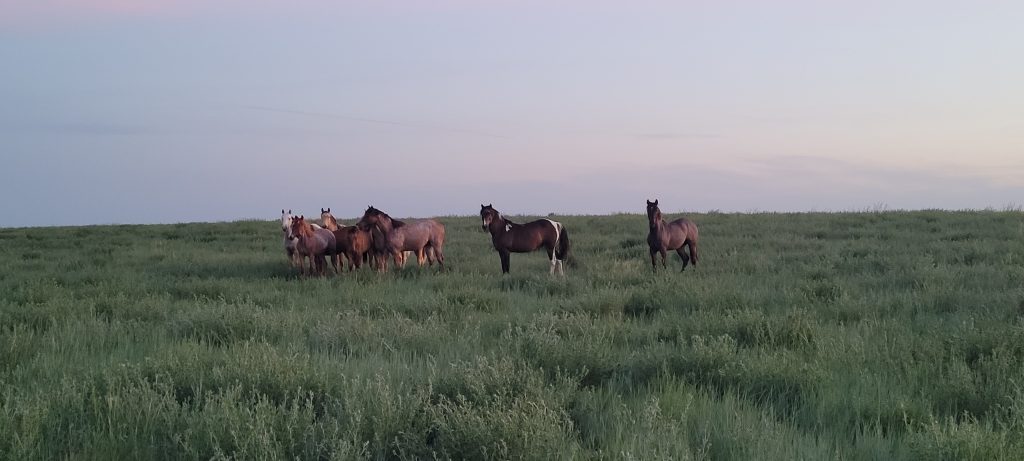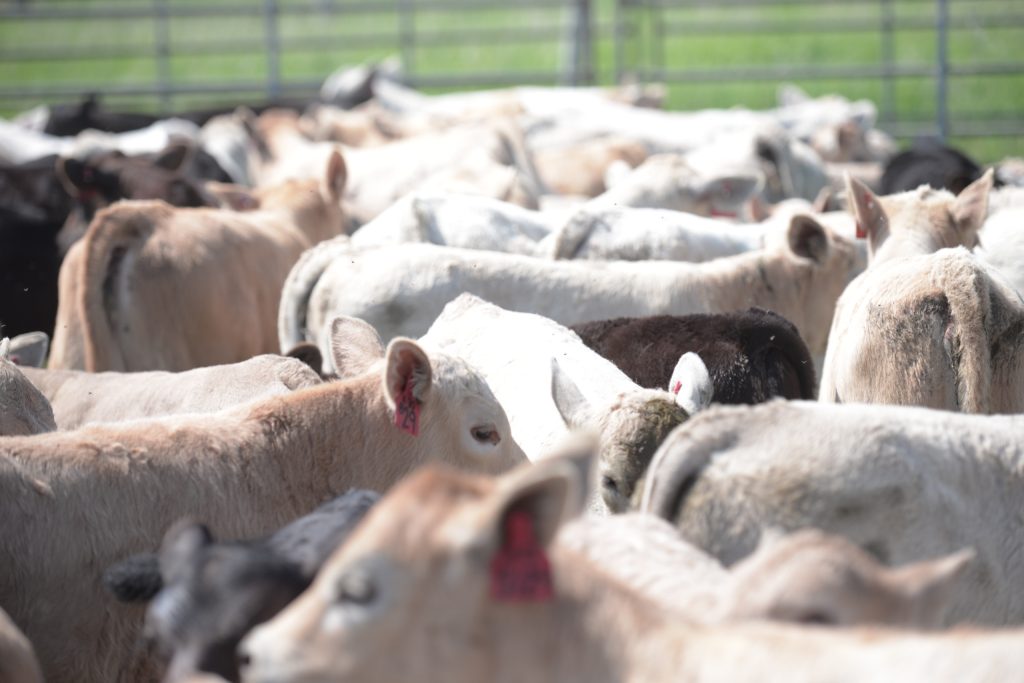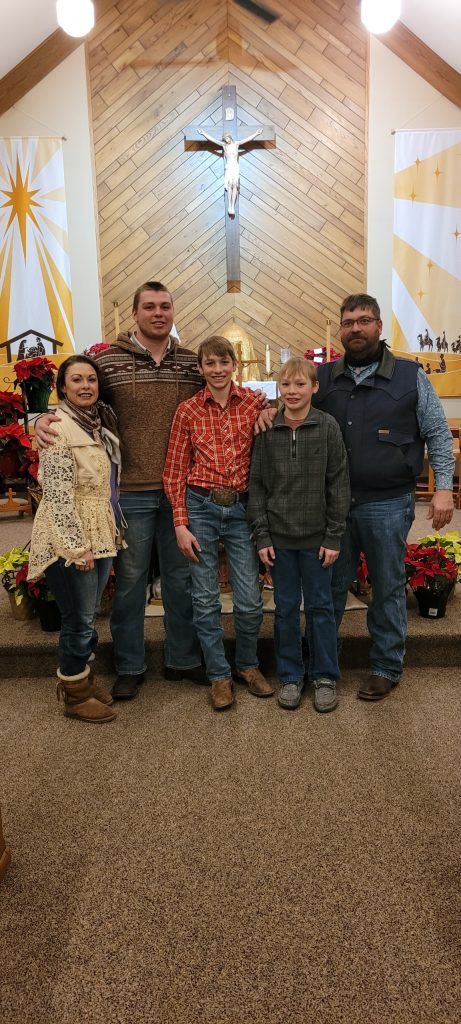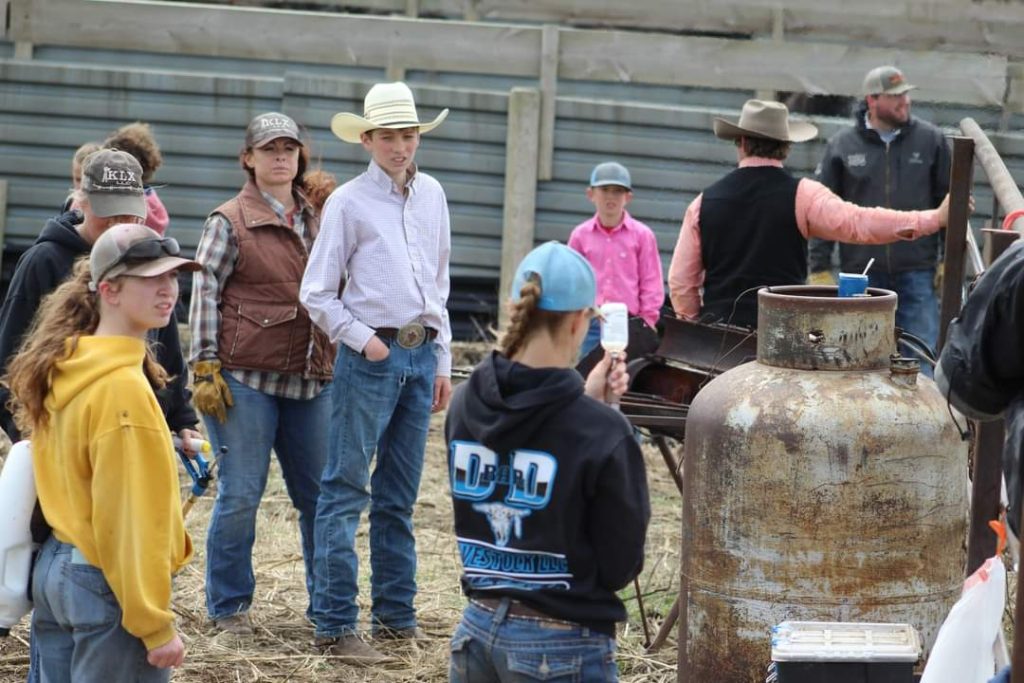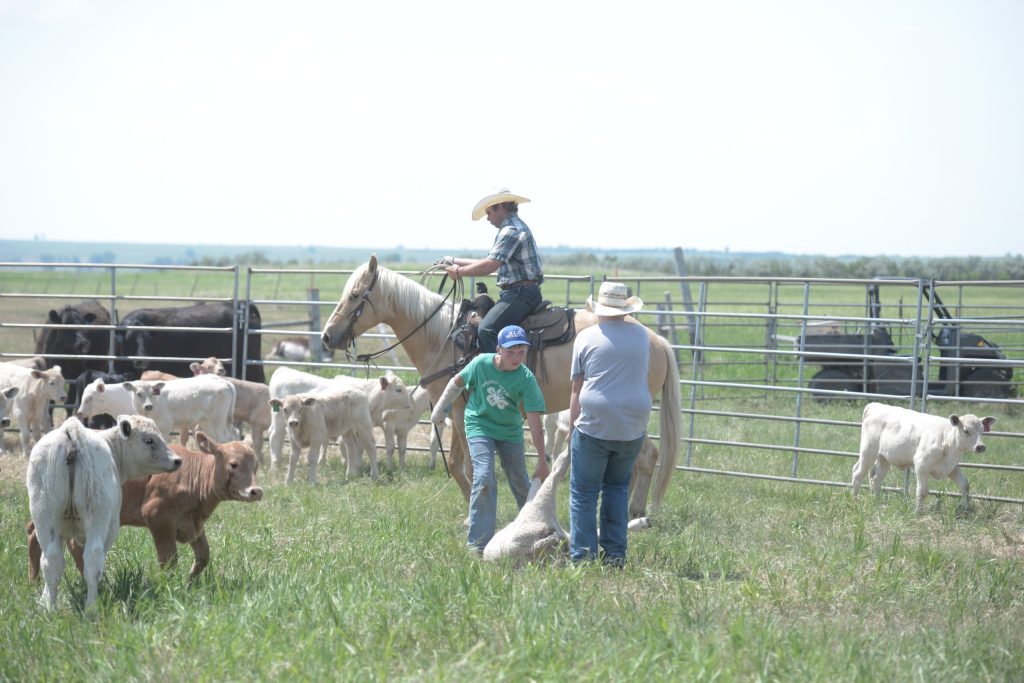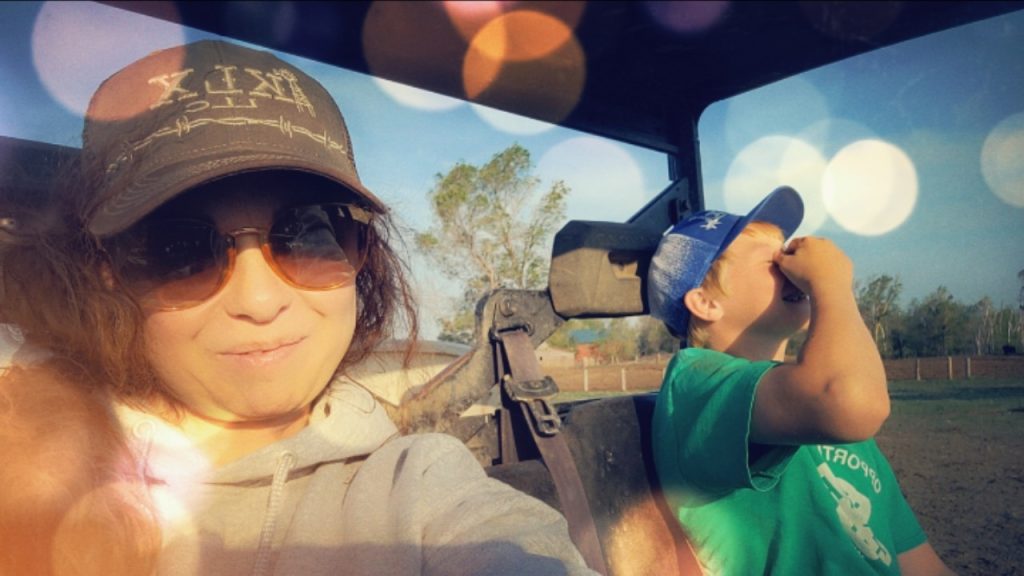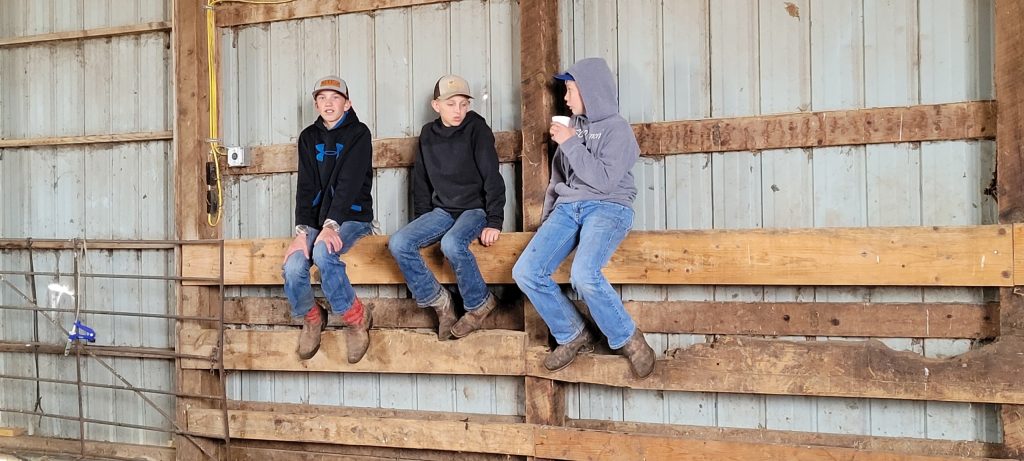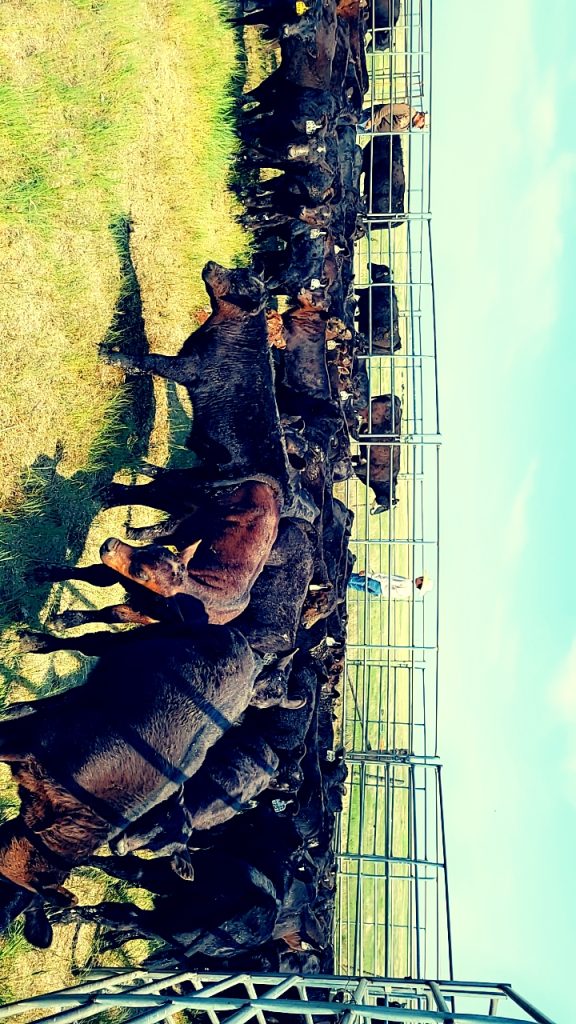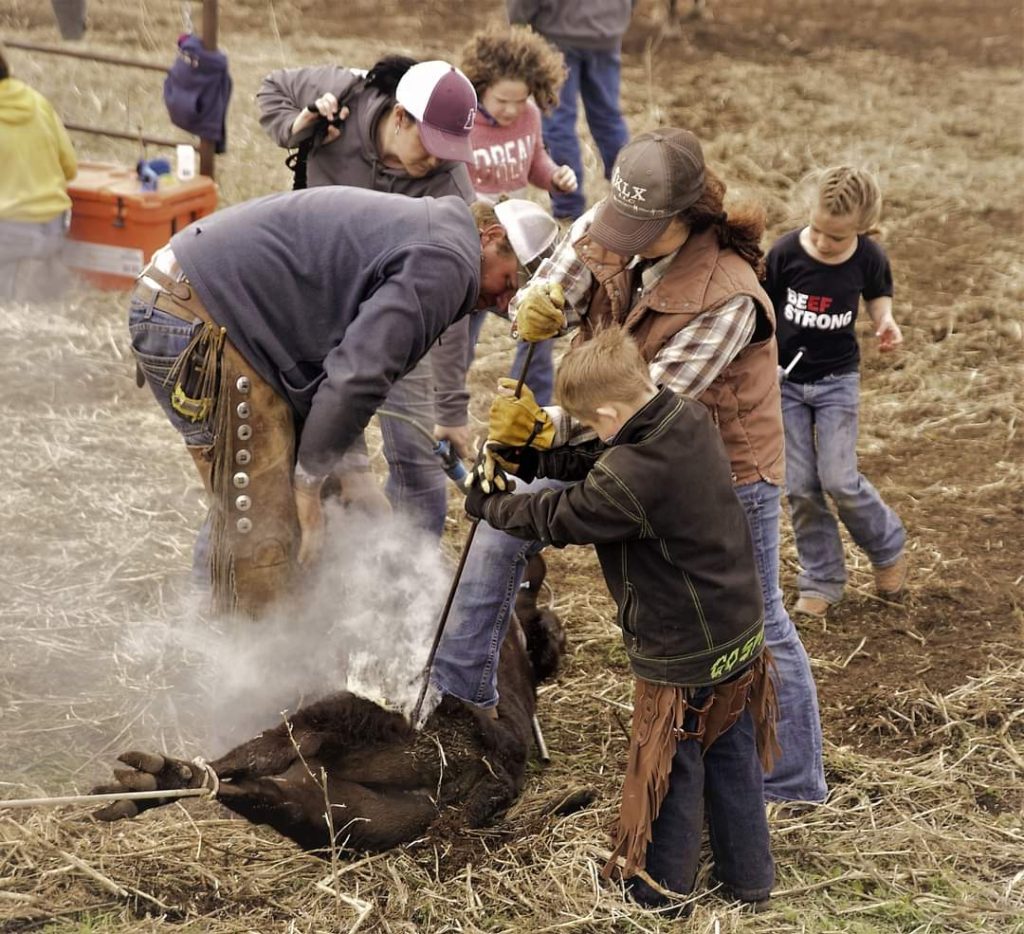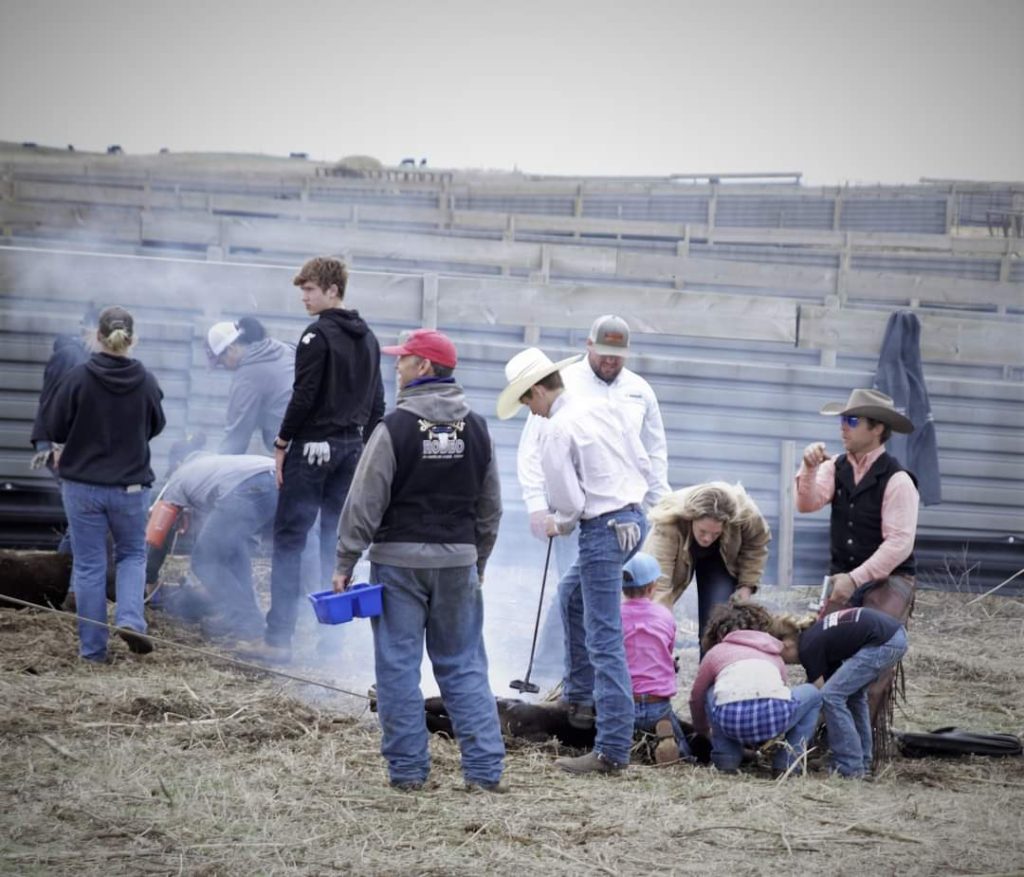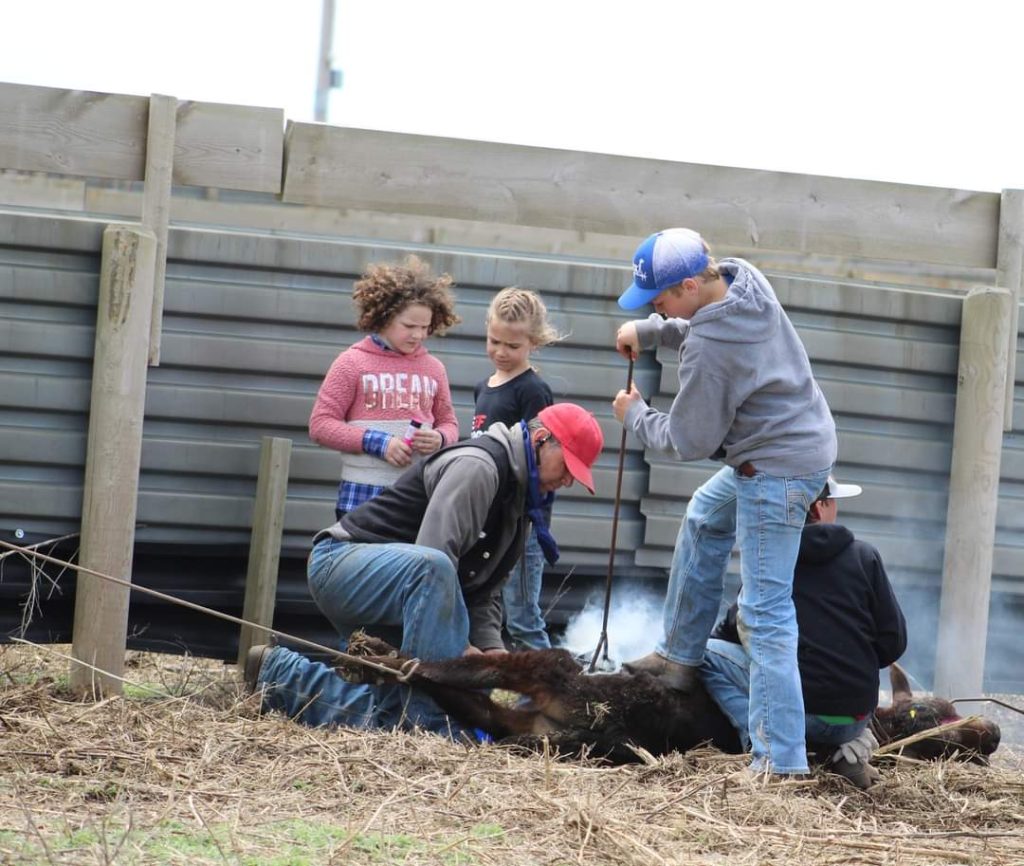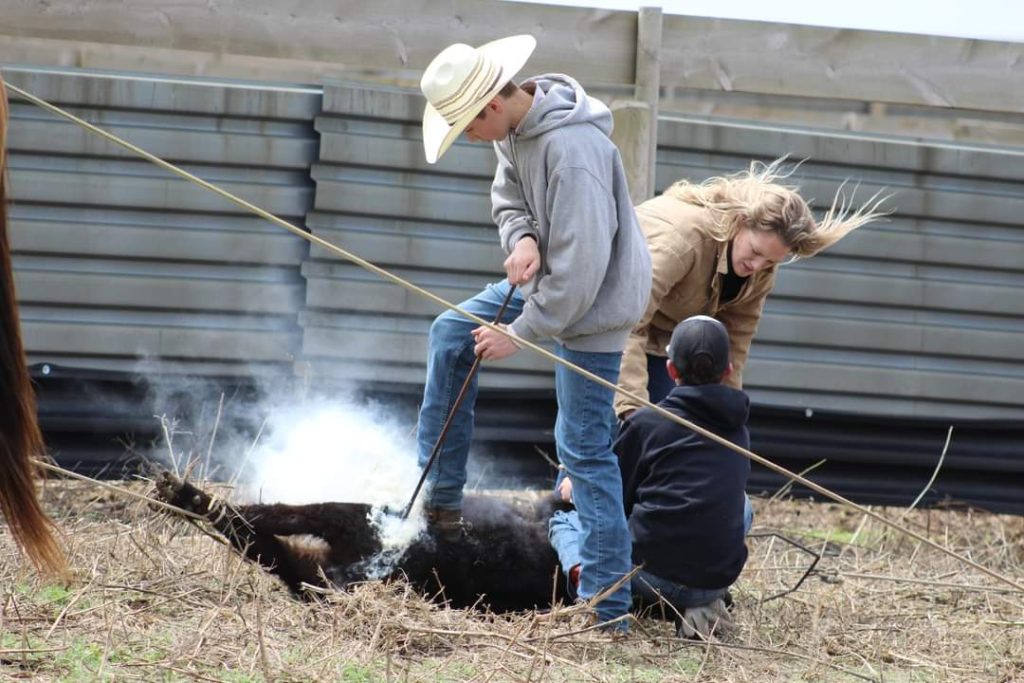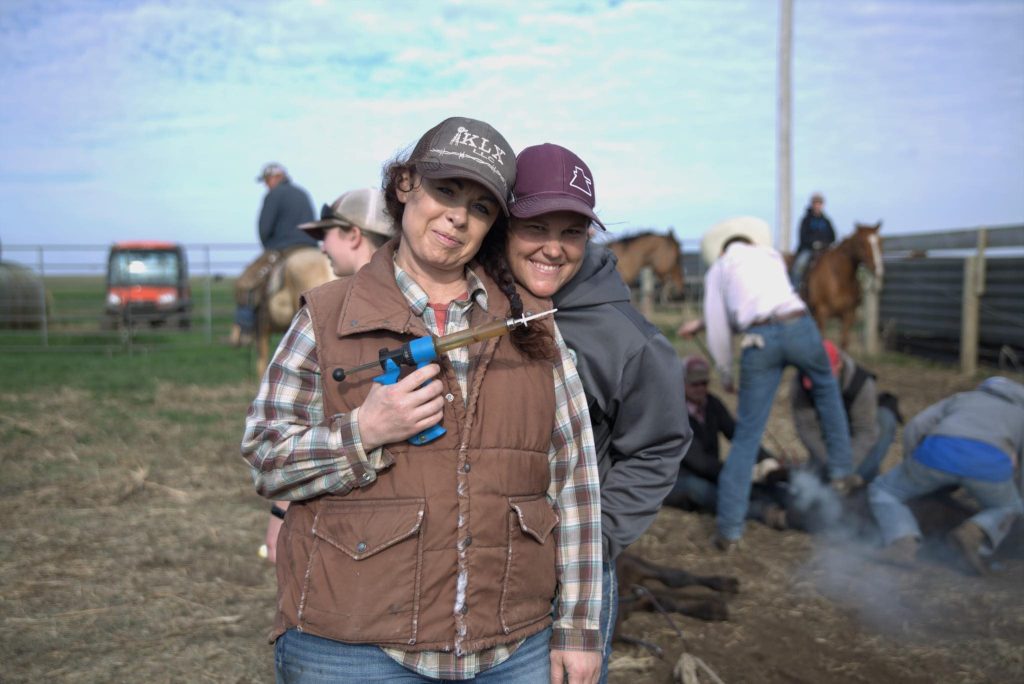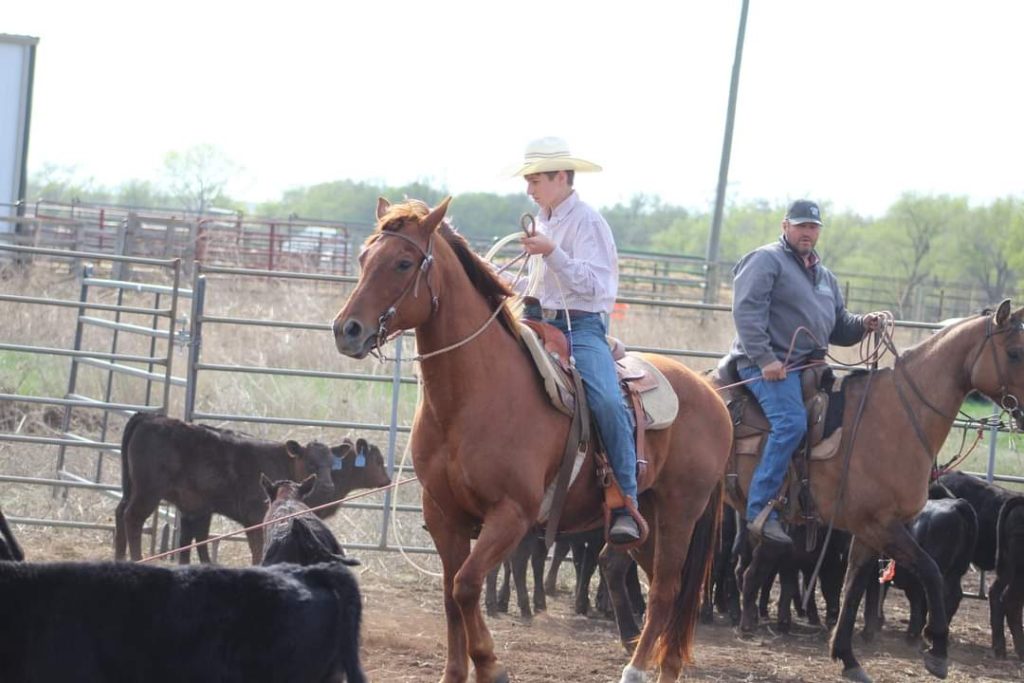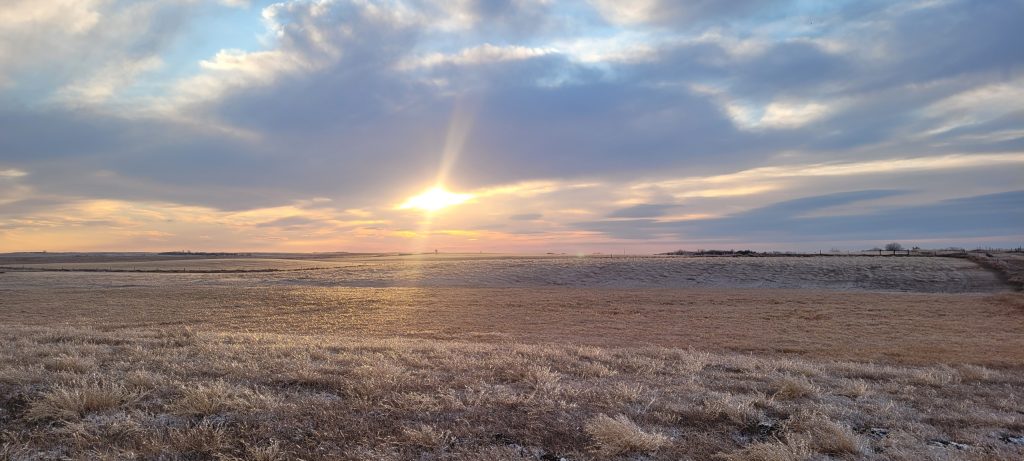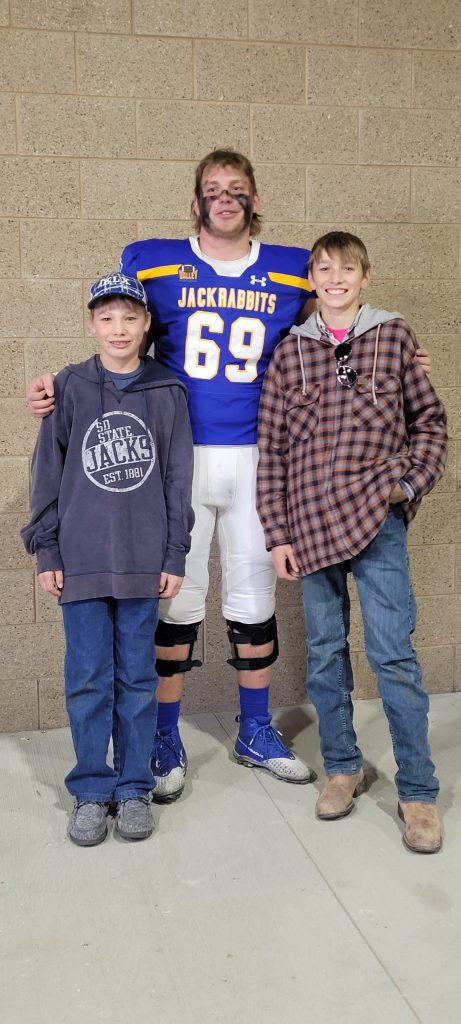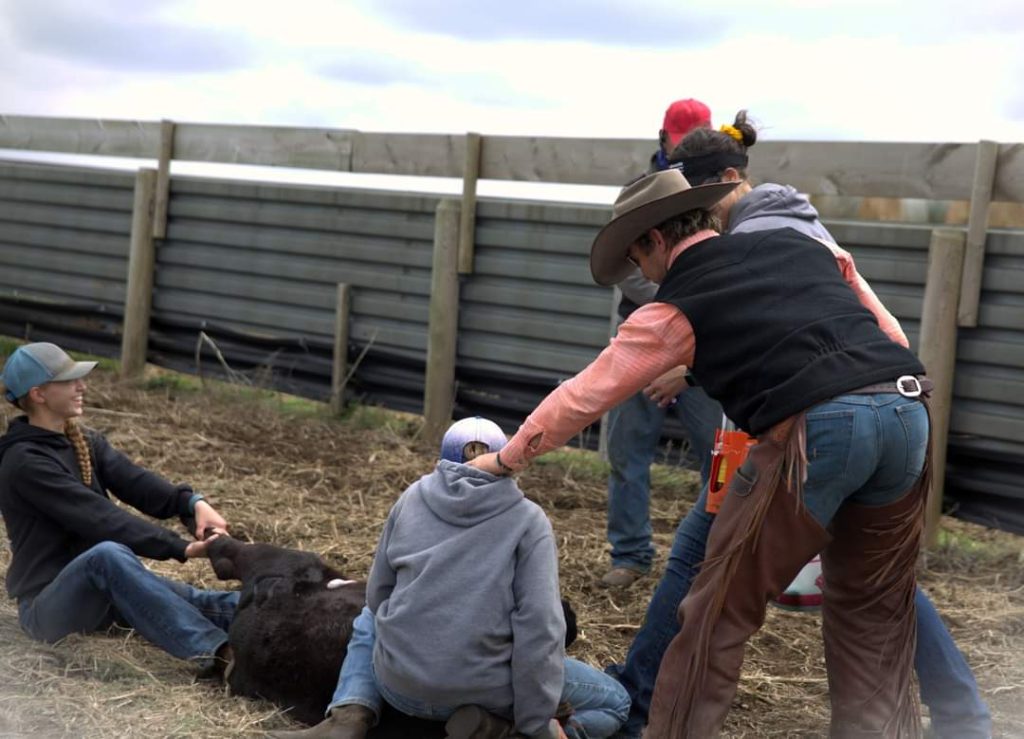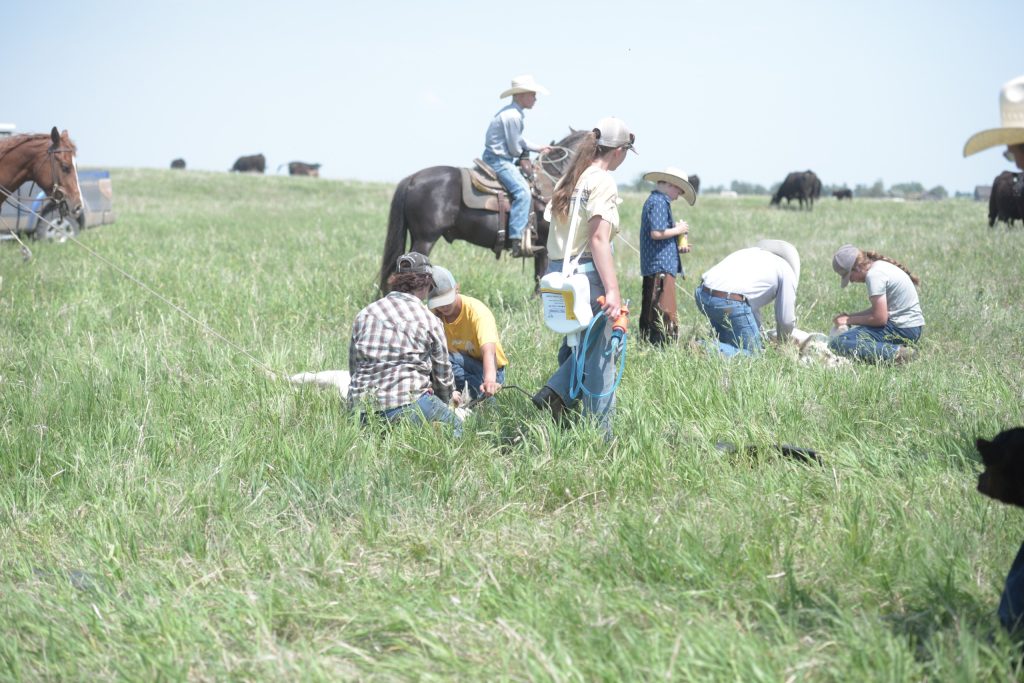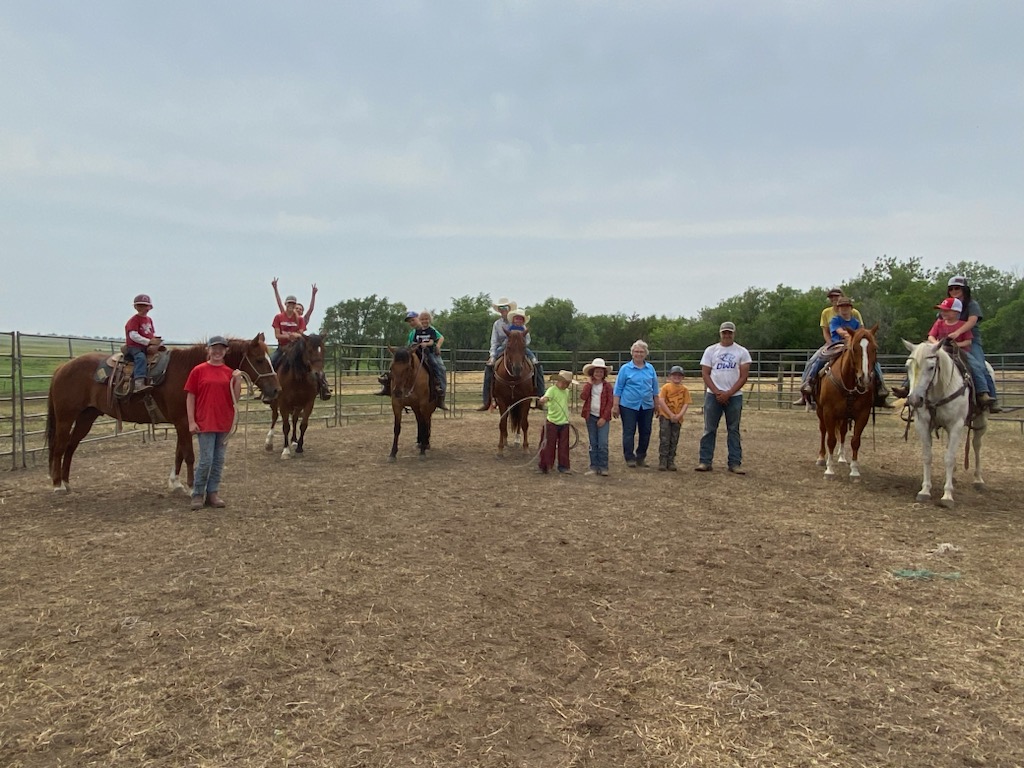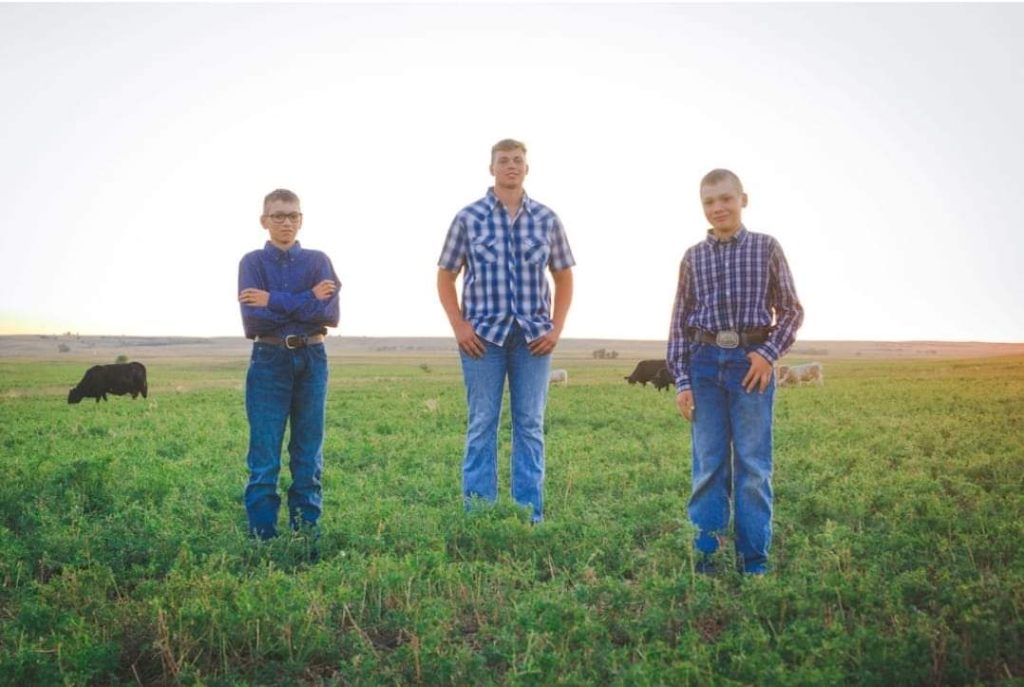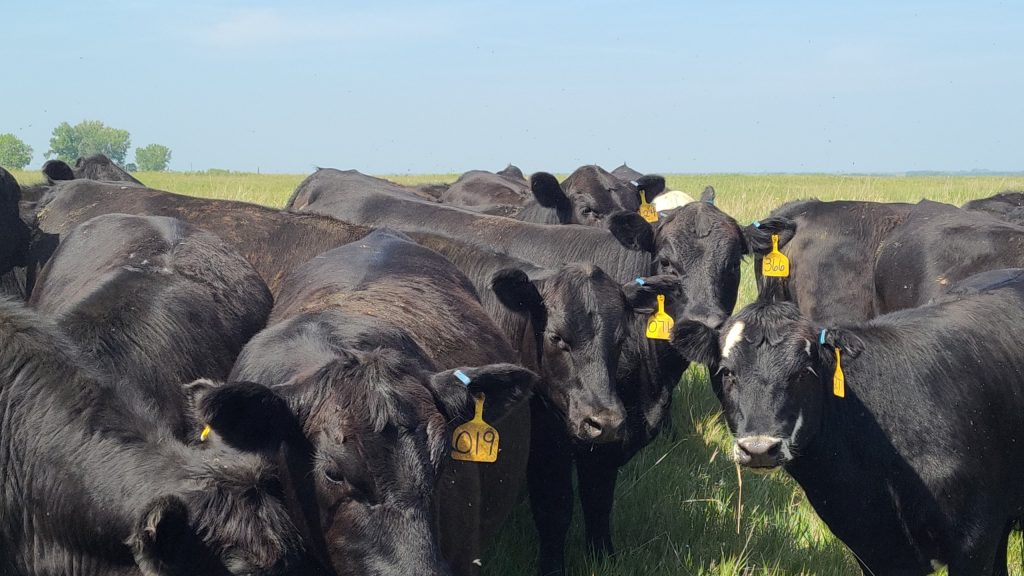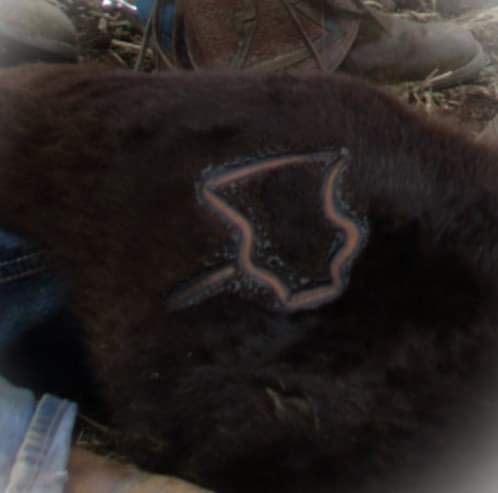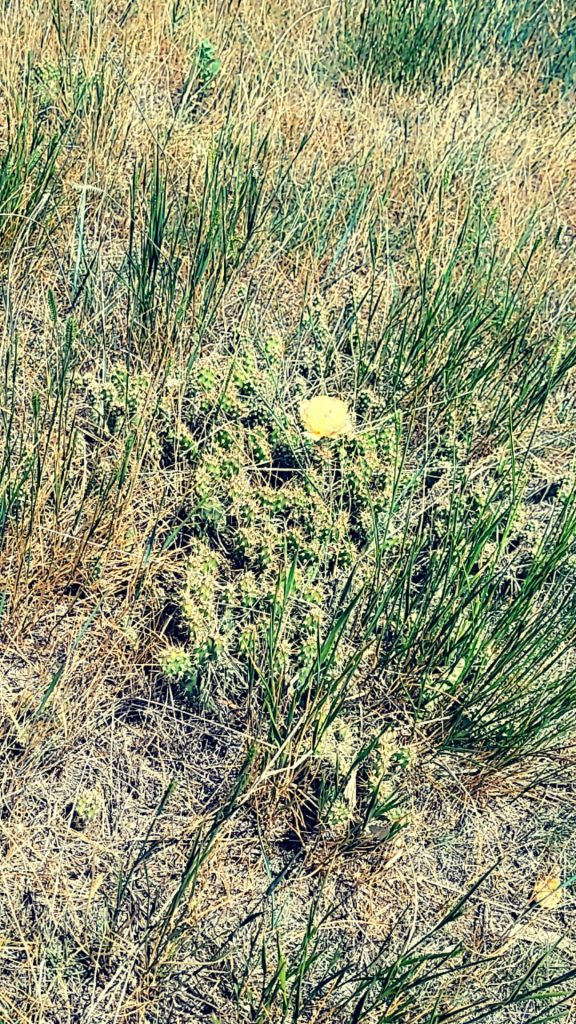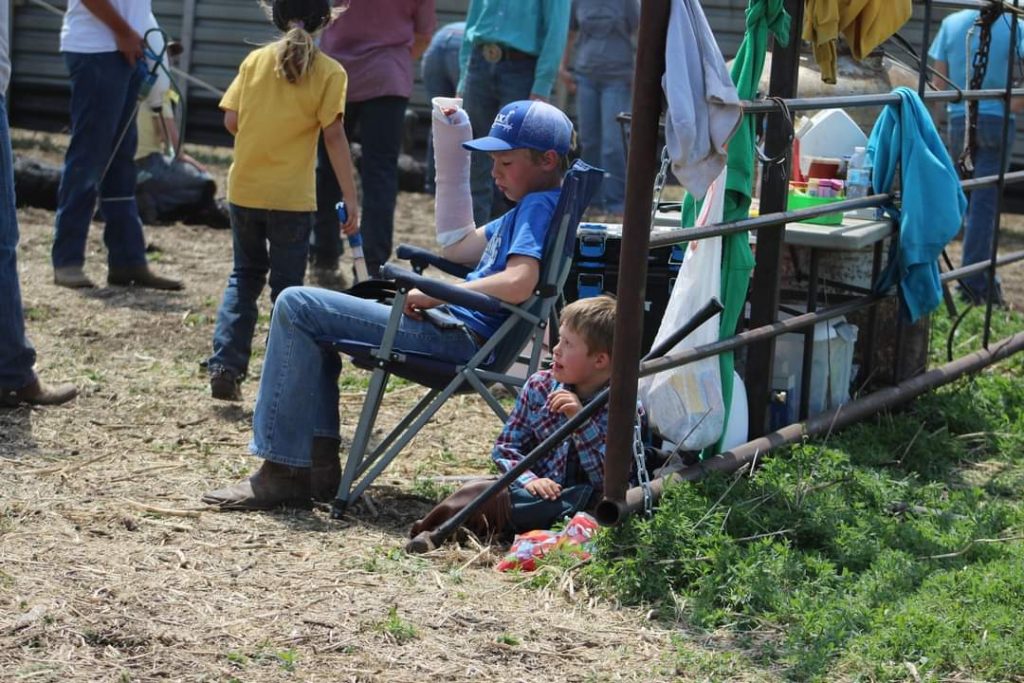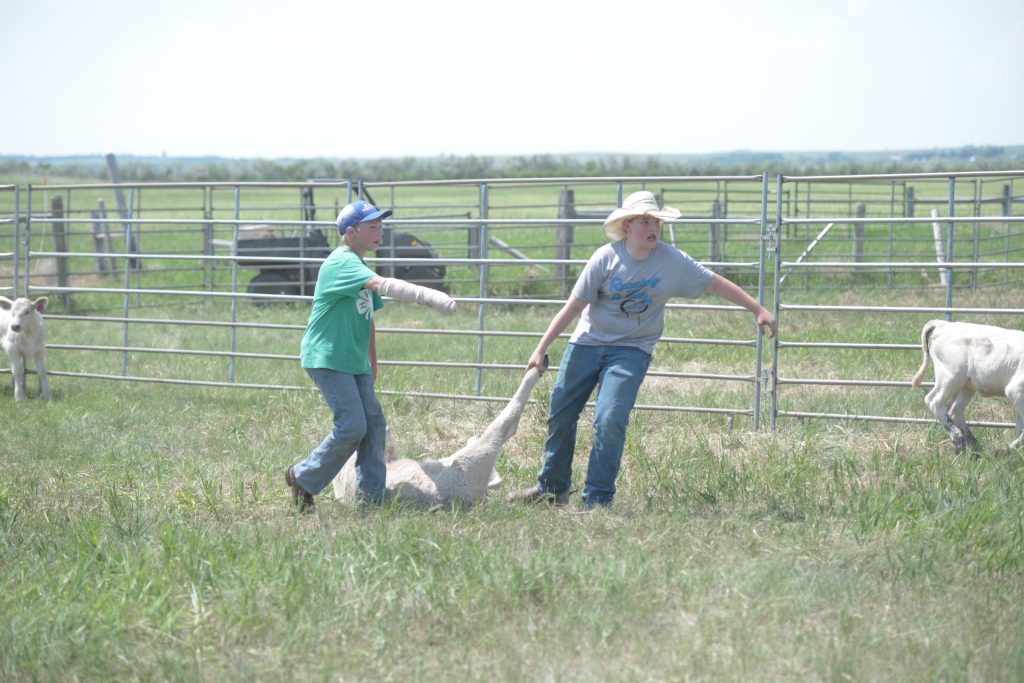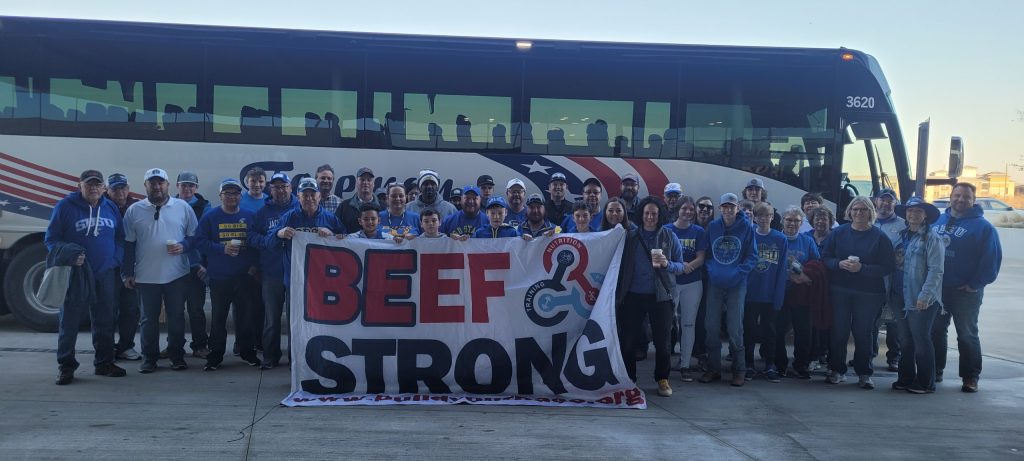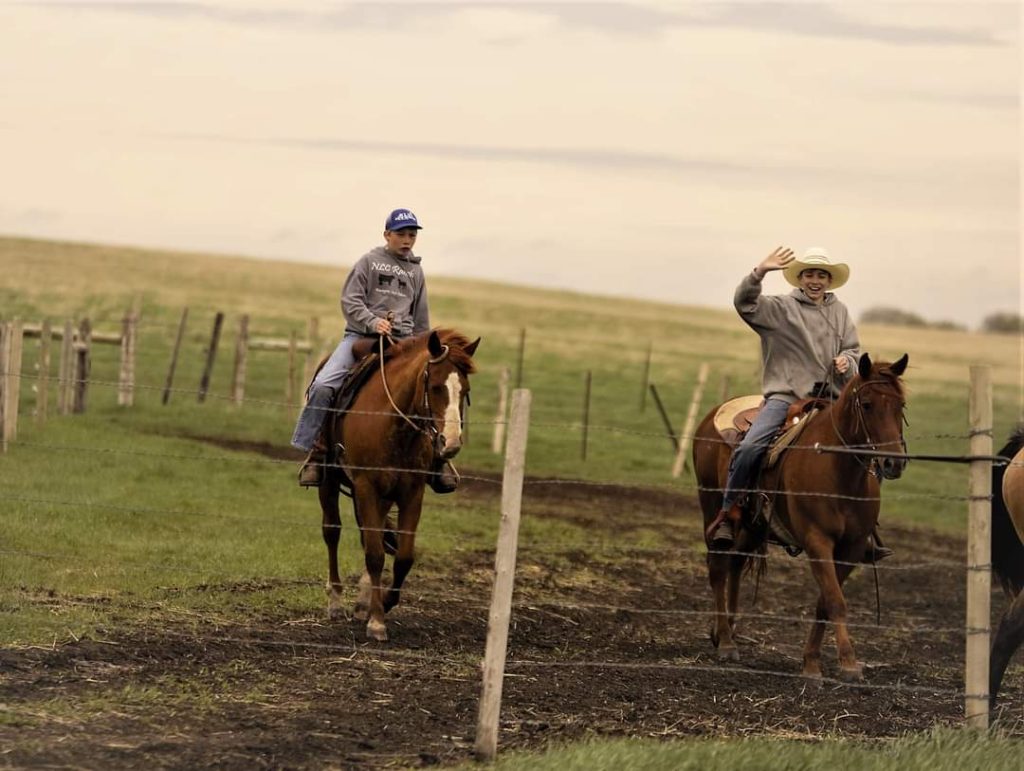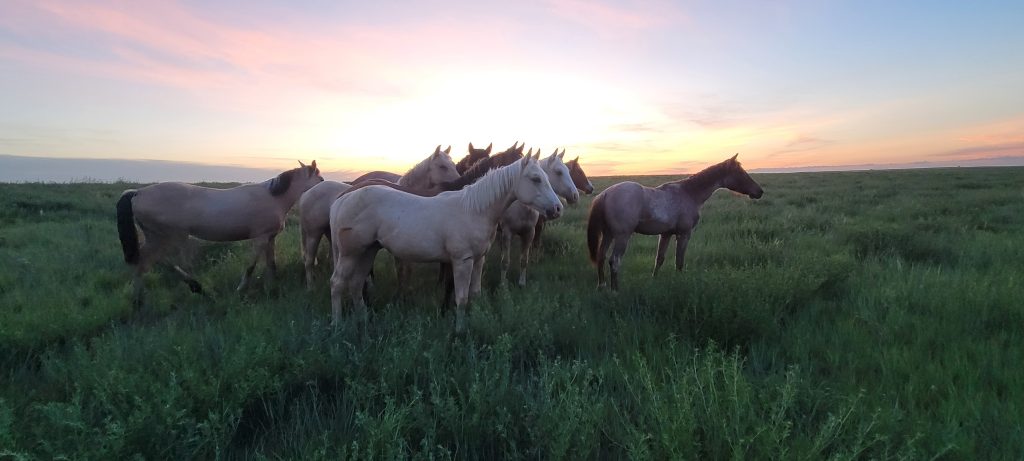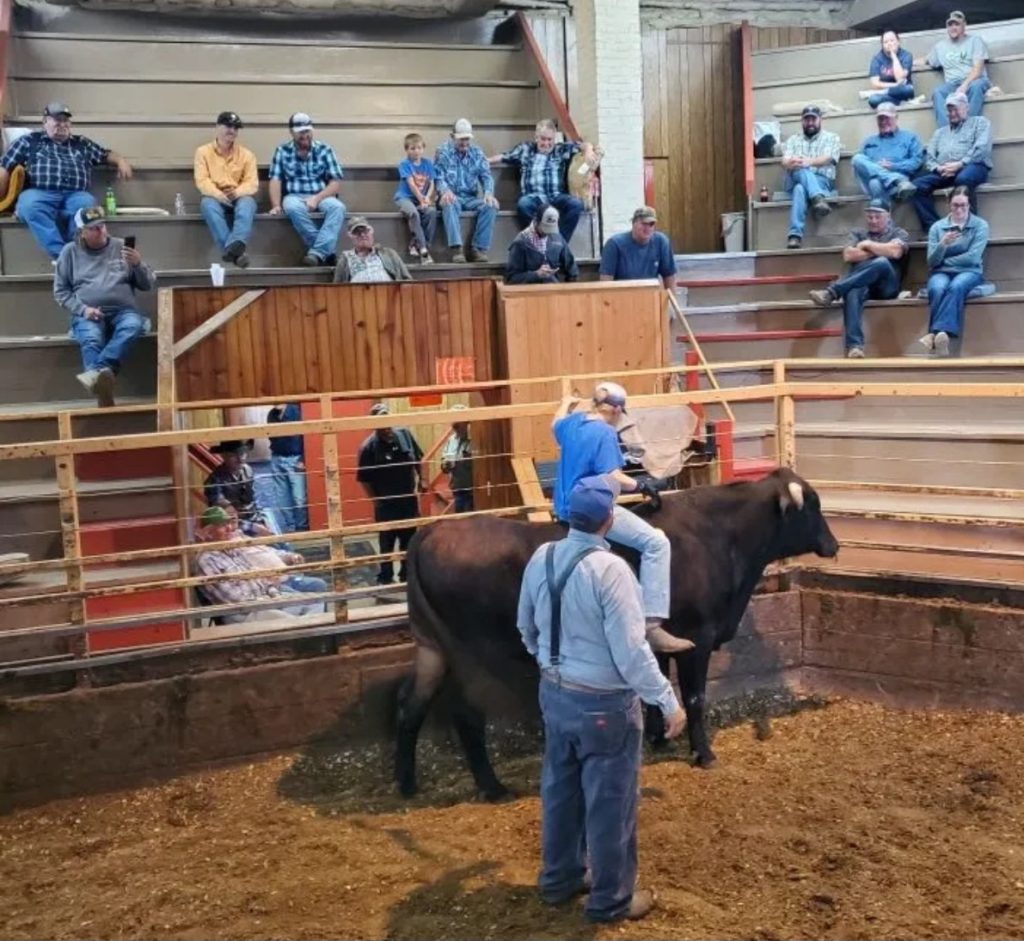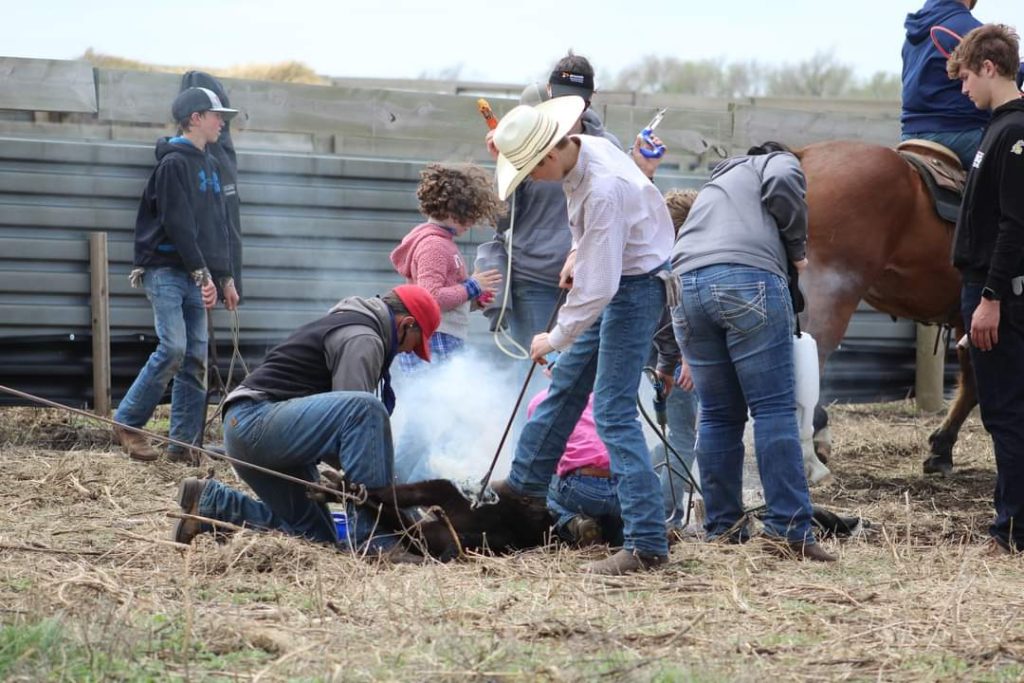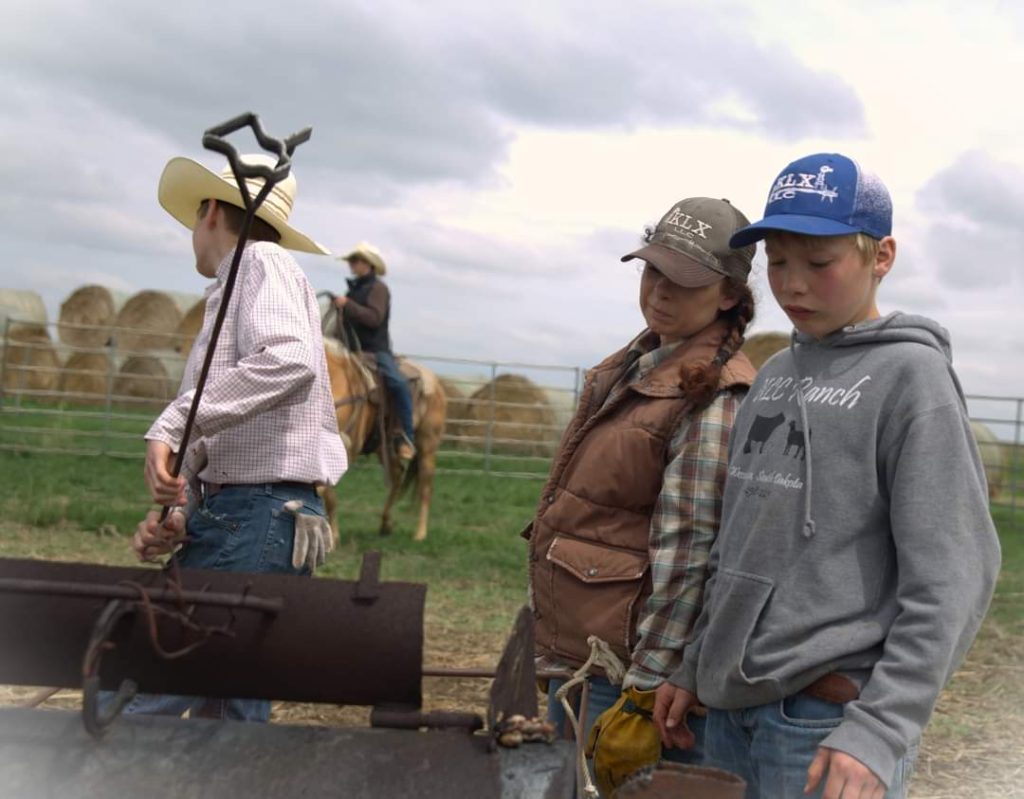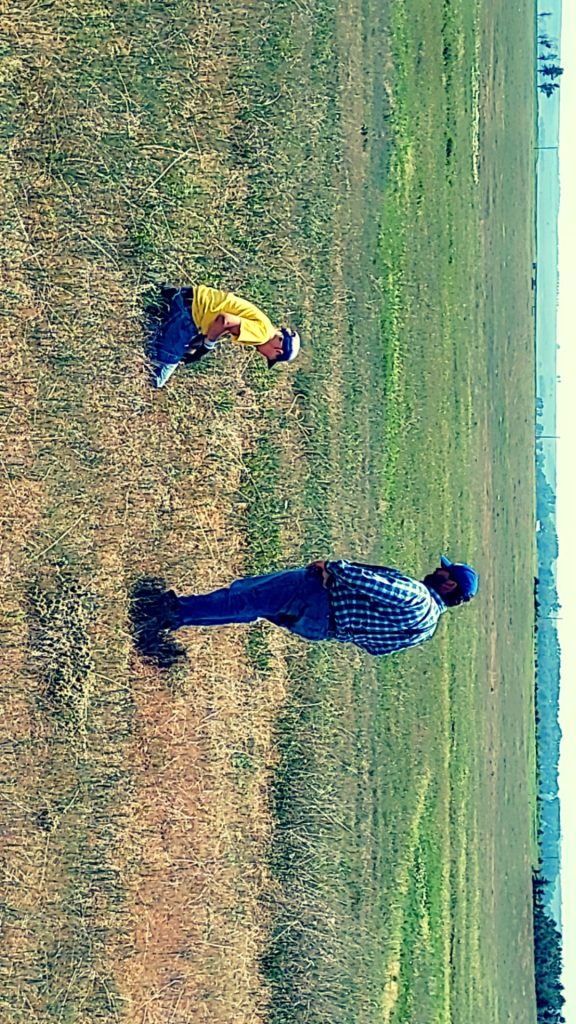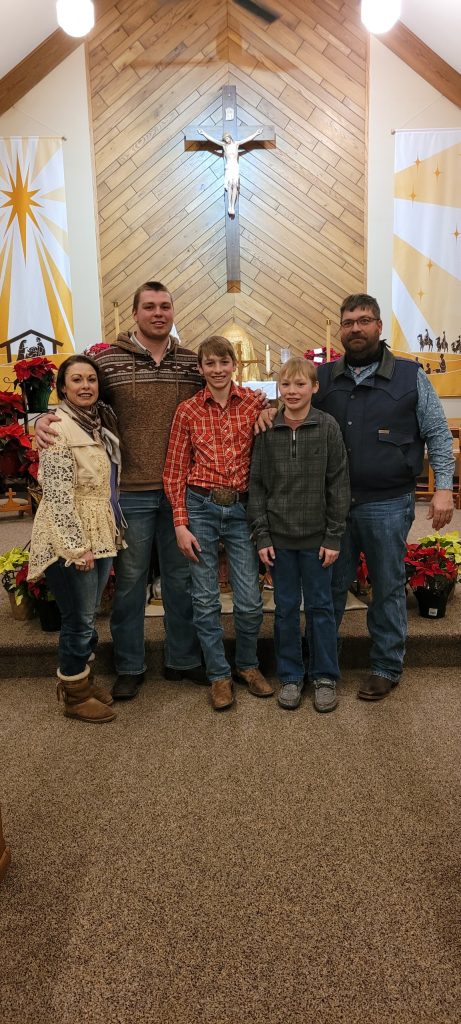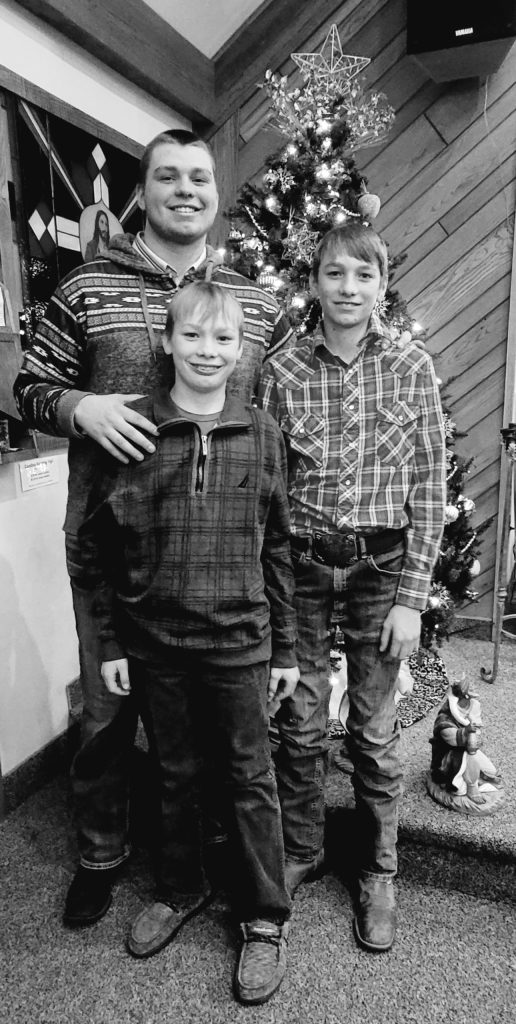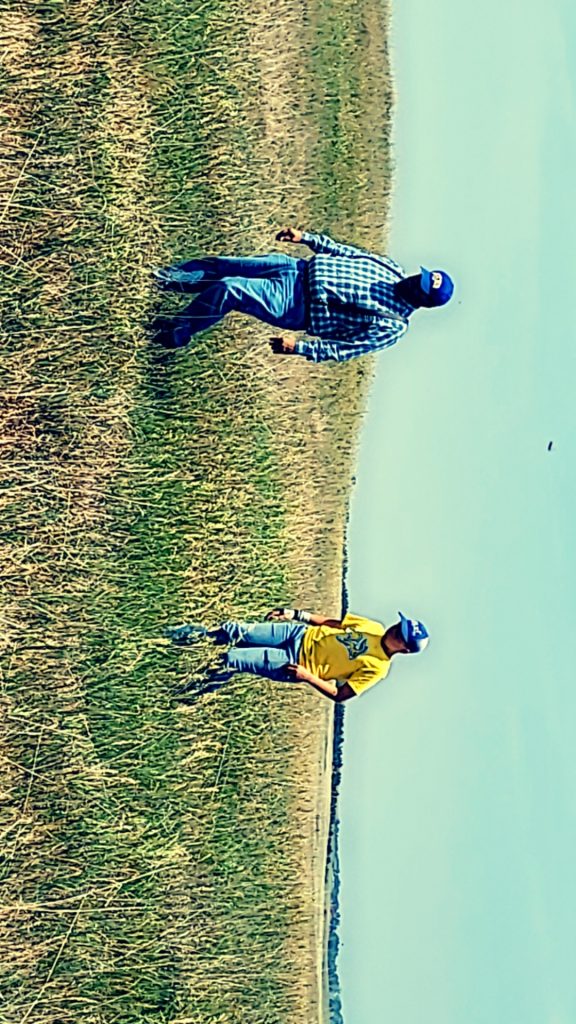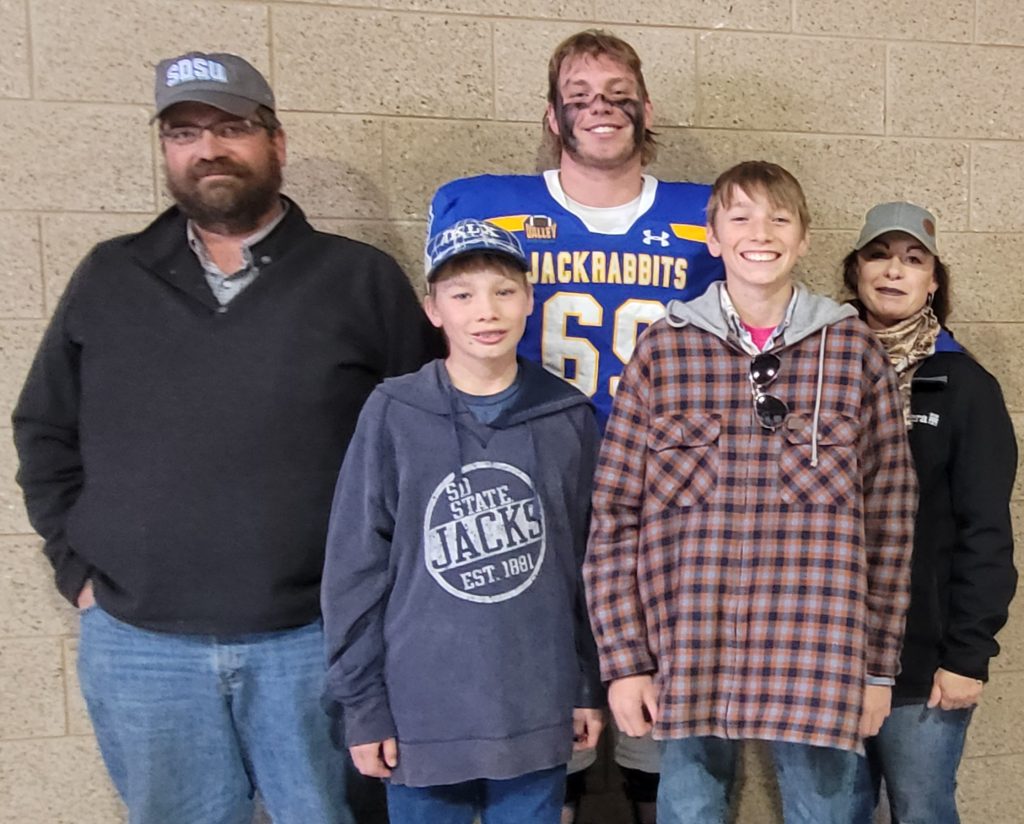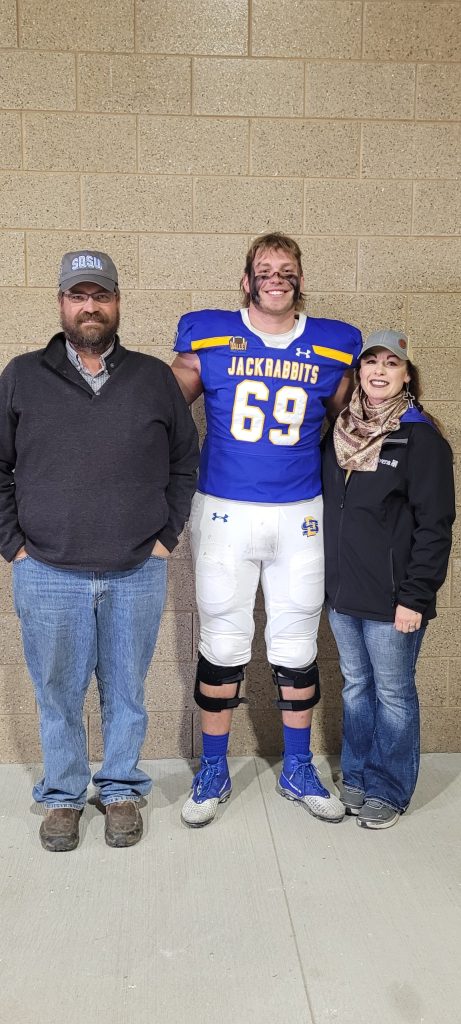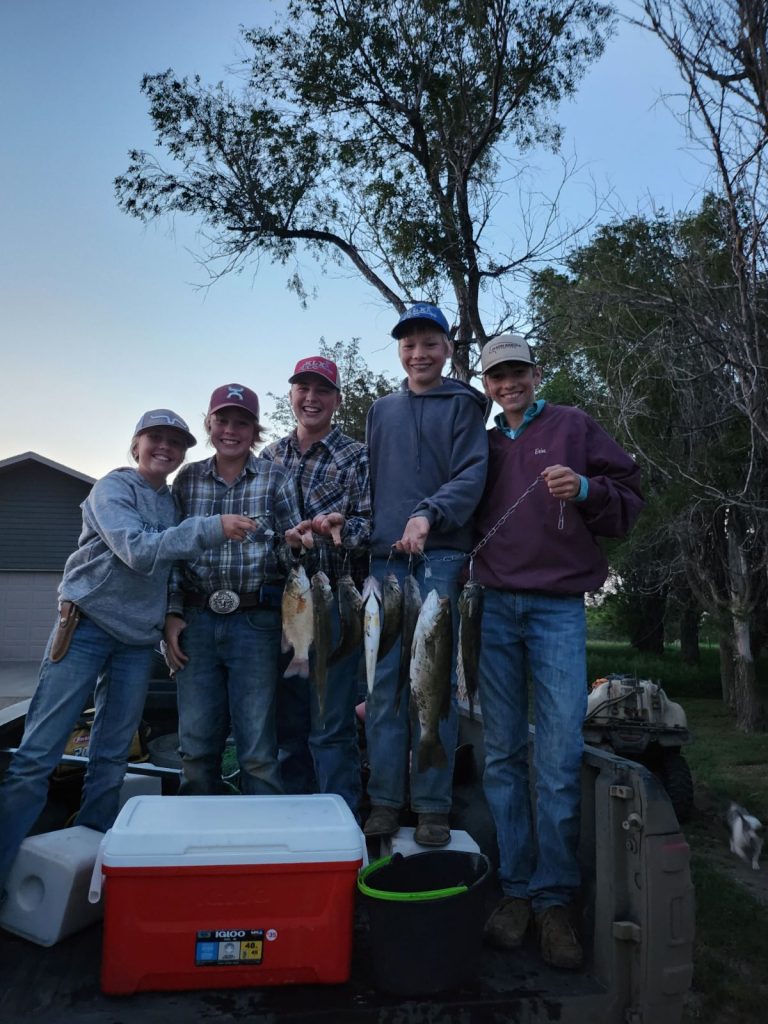Christensen Family
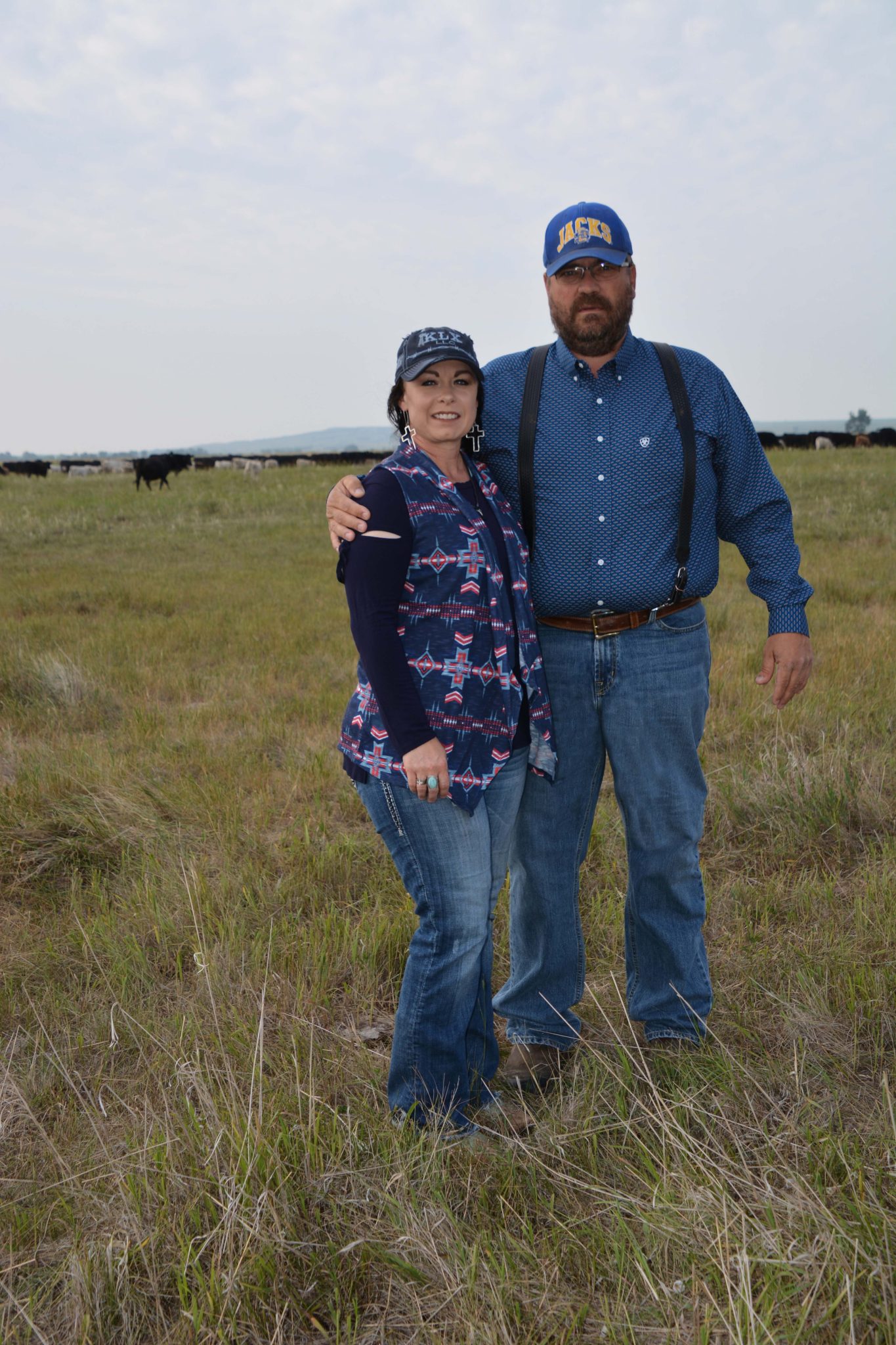
By Lura Roti for South Dakota Farmers Union
A trip to the pasture to check or move cows often turns into a range plant identification practice for the Christensen brothers: Quinten, 19, Landen,16, and Hayes, 13.
Their dad, Wade, will point to a plant and ask what its name is, what type it is and the season of growth.
“It’s two things in one,” Landen explained. “You think you are going out to the pasture to work cattle and then we go out there and we also learn a new plant which helps me in 4-H and FFA Range Judging.”
Wade can’t help himself. Rangeland species and management have captured his interest since he was his son Landen’s age. “Brandy Knutson was the Extension agent who got me into range judging. I was on the first team from Wessington Springs to win 4-H range judging. We went on to compete in Oklahoma twice,” explained Wade, who went on to judge at the collegiate level as a student at South Dakota State University. He graduated in 1999 with a range science degree.
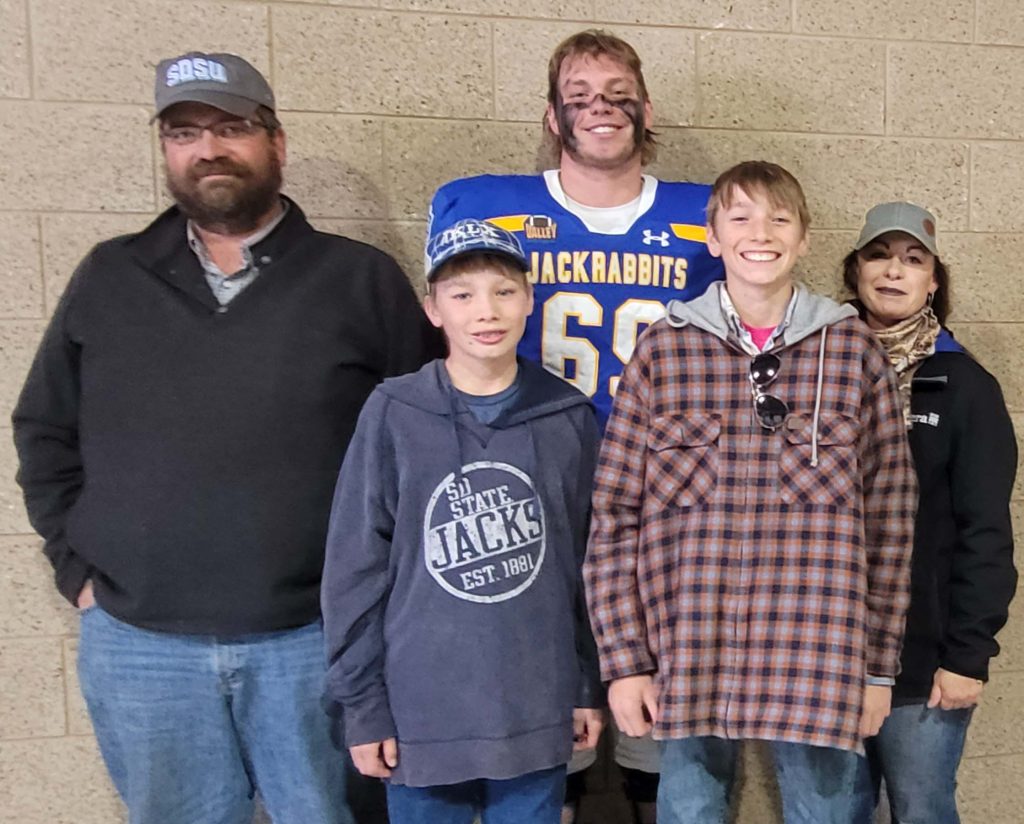
“I picked range science because I was good at it,” he explained. The degree has served him well on and off the family ranch. He worked as a range conservationist for the Bureau of Indian Affairs. “Range science focuses on soil health because that is what gets us through these droughts – like we are in right now,” Wade said.
When he and his wife, Christi, took over his family’s ranch in 2007, he quickly began installing water tanks and cross-fencing to allow for rotational grazing.
“When I was growing up, it seemed like everything had its own pasture. You put cattle in this pasture and they stayed there all summer. Today, our cattle don’t stay in one pasture much more than three weeks,” Wade said.
Once they rotate their cows from one pasture to the next, the range gets to rest for the remainder of the summer.
“It’s the rest that makes all the difference,” Wade said. “The grass looks really good, even when it’s dry. Once we cross-fenced and put in water, we could not believe how fast it changed. The weed species were gone in about two years. My neighbor to the west was so impressed he began renting me some of his ground.”
After working for the Bureau of Indian Affairs for nearly 15 years, in 2017 Wade and Christi had the opportunity to become co-owners of the Kimball Livestock Exchange together with Chad Heezen.
“We both grew up around cattle and auction markets and believe it is important to keep the sale barn open. Competitive markets are crucial,” Christi said. “I grew up going to the Miller, Kimball and Chamberlain sale barns with my family.”
Christi (Yost) grew up on her family’s ranch northwest of Gann Valley. “Growing up I was around livestock all the time. I enjoyed the family aspect of working hard and getting to see the fruits of your labor.”
She appreciates the fact that their sons get to grow up similar to how she and Wade did. “Ranch work teaches responsibility and respect. Love, respect and responsibility are big things we focus on in our family.”
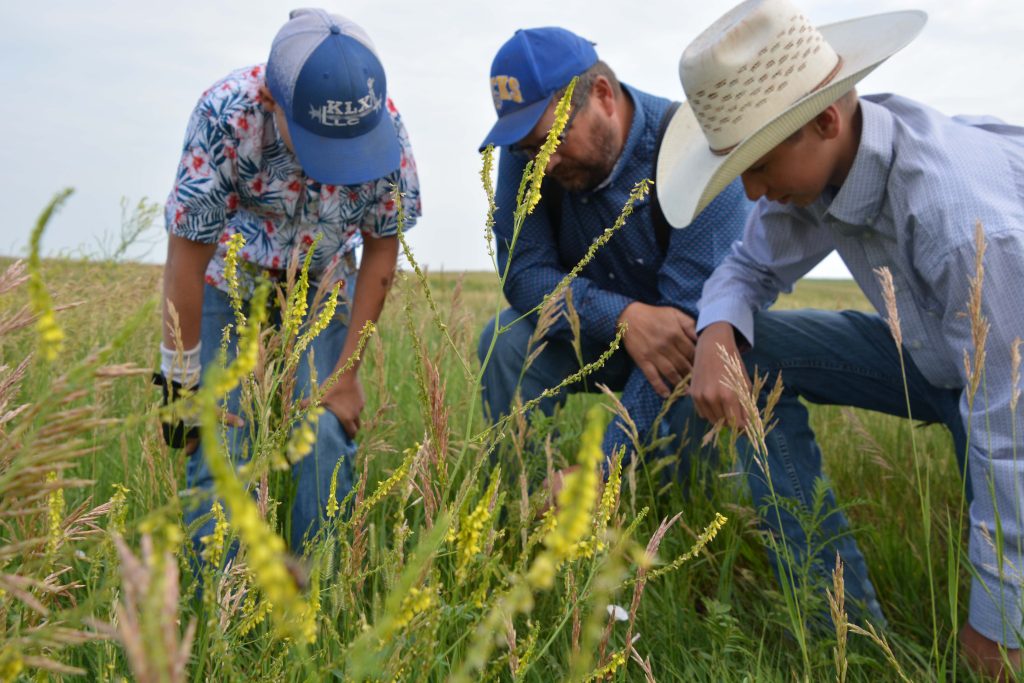
Oldest son, Quinten, agreed. “Everything you do on the ranch involves responsibility. Growing up there and living that way of life really instills a work ethic and a respect for hard work,” he said. “The harder you work, and the sooner you learn it at a young age, it makes other things in life easier.”
A sophomore majoring in agriculture business at SDSU, Quinten plays football for the Jacks. He is an offensive lineman and can play four of the five line positions.
“Growing up on the ranch makes it easy for me to wake up for these early morning workouts,” said Quinten, who starts each summer weekday with rehab at 5 a.m. followed by practice, followed by rehab. “I think ranch experience gives me a little extra edge because I am not afraid of hard work.”
Because of the Monday-Friday 5 a.m. to 9 a.m. football commitment, this summer Quinten needs to be close to Brookings. So, he is working off the ranch for a cousin who owns a landscaping company in Astoria.
While Quinten is away, his younger brothers are helping keep up with ranch chores. They also make time for area brandings.
“We enjoy getting to rope in the pen,” Landen said. “My uncle says it’s rude to go first, so we work the ground for a little while until it’s our turn to rope and drag.”
Christi’s brothers, Rodney and Wade Yost, taught the boys how to rope. Hayes enjoys brandings because of the opportunity it provides to hang out with his cousins.
“I like going out with my cousins to ride horses and work cattle together,” he said.
When their parents bought the Kimball Livestock Exchange together with Chad Heezen, their sons’ ability to help out on the ranch became even more important.
While Wade keeps busy consigning cattle, Christi took on a second off-ranch job working as the sale barn’s office manager/sale clerk.
“These small sale barns are incredibly important for the small towns where they are located,” said Christi who also works part-time as a nurse for Avera Weskota. “Local businesses have told us that on Tuesdays those who are selling cattle also shop at the hardware store, they buy groceries, they stop at the convenience store and they go out to supper after the sale.”
“There used to be sale barns everywhere,” Wade said. “There was one in Wessington Springs, Miller, Highmore, Redfield, Faulkton, Gettysburg, Chamberlain – none of these towns have sale barns anymore.”
To help bolster local businesses, the Christensens and their business partner, Chad Heezen give meal tickets to consignors who sell over a certain number head of cattle. The tickets can be redeemed at the local steakhouse in Kimball or at several rural steakhouses.
In addition to clerking sales and payroll, since 2017 Christi has maintained the website where buyers and sellers can look up sale history.
“The history of the cattle crisis and the changes in the market are right there for people to see,” Christi said.
Like everyone in the cattle industry, the Christensen family is enjoying the current market highs.
“I have been getting a lot of thumbs-up and smiles,” Christi said.
Wade added, “It’s fun to own a sale barn right now. I have been getting texts and phone calls from cattle producers who are so happy with the prices they have gotten. The other day a guy texted me. Together, he, his brother and dad, sold 500 head. His text read, ‘I’ve never held a million dollar check before.’”
Consignors generally come from a 150-mile radius of Kimball, but they have sold cattle from all of the surrounding states, as well. The buyers travel even further.
“Buyers come back year after year,” Wade said. “One order buyer comes from a town in Nebraska with a sale barn that also has sales on Tuesdays. To tease him, I asked him why he comes to Kimball every Tuesday for our sale? He said, ‘You know why I come up here. These cattle are that much better.’”


